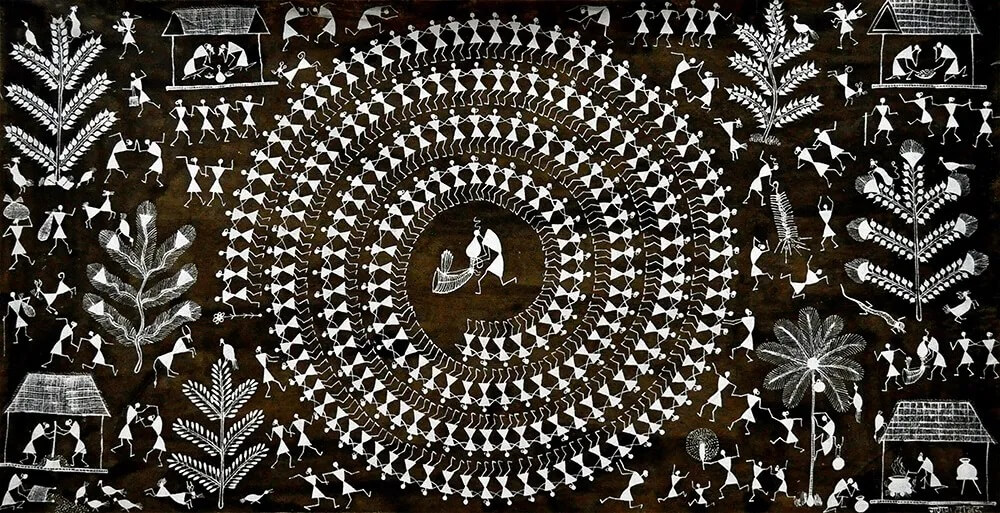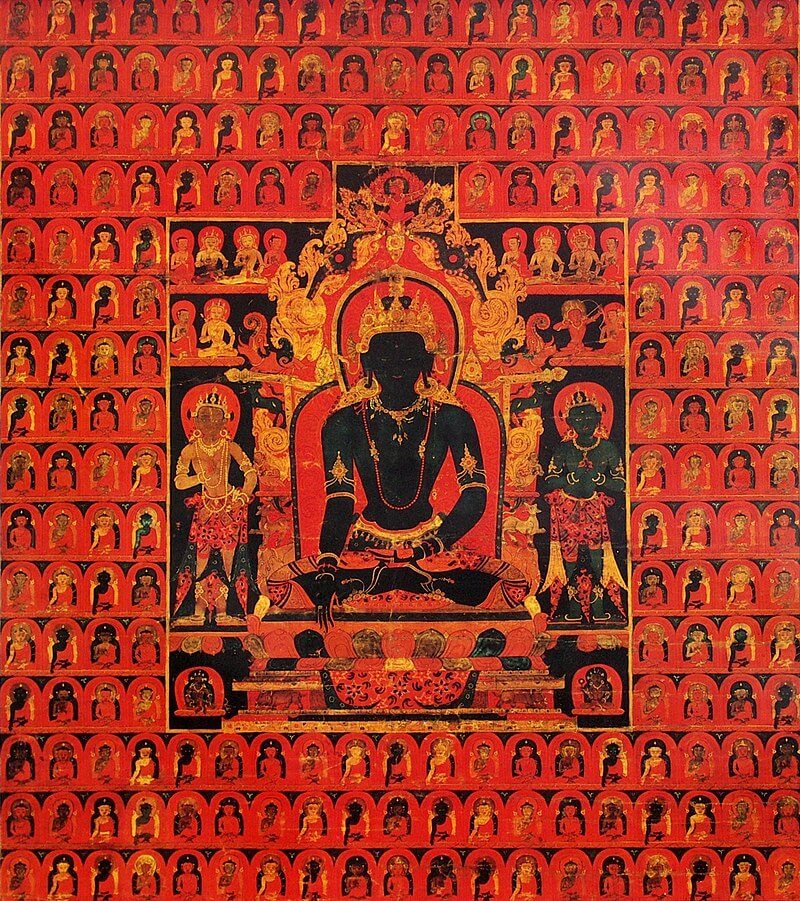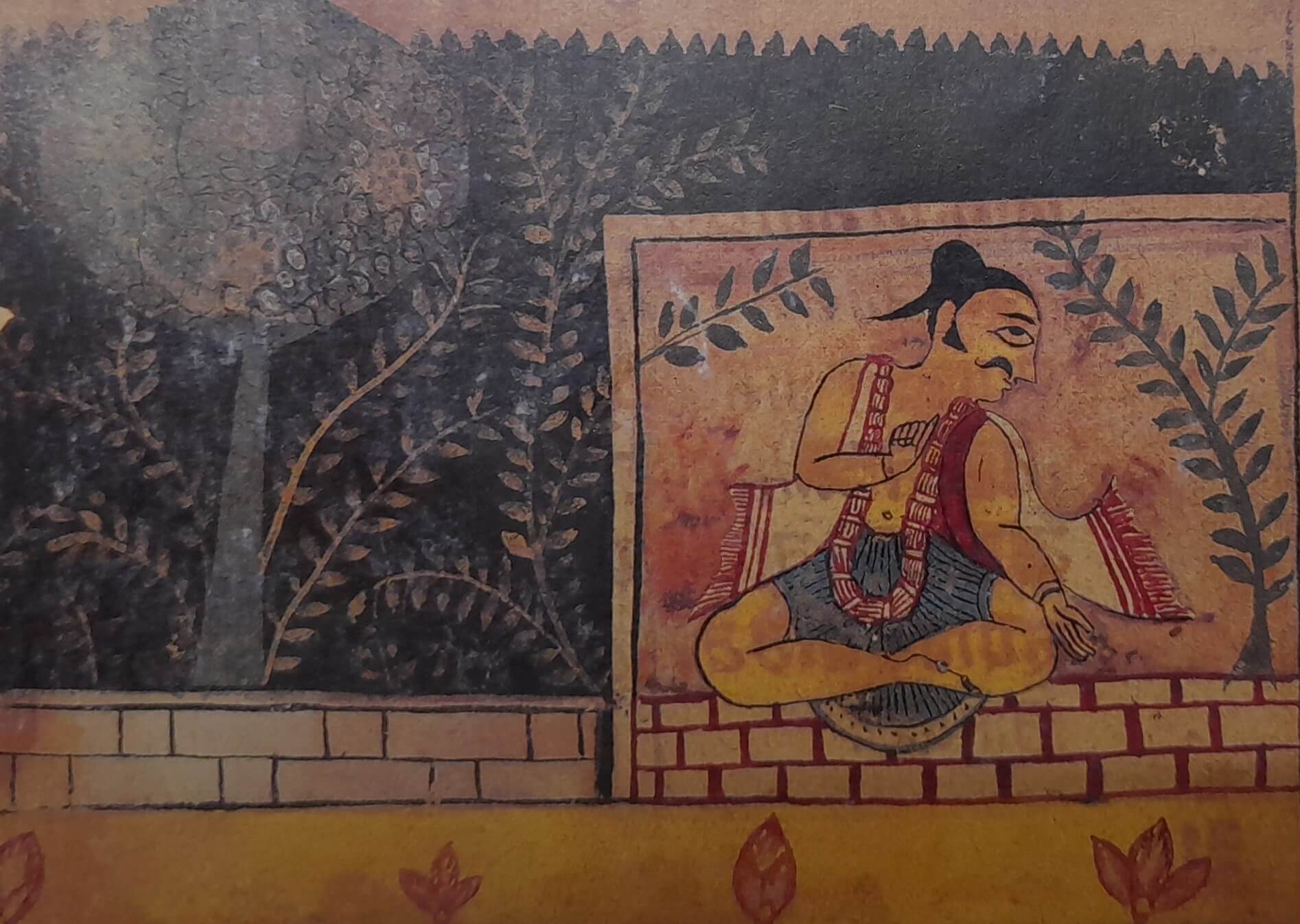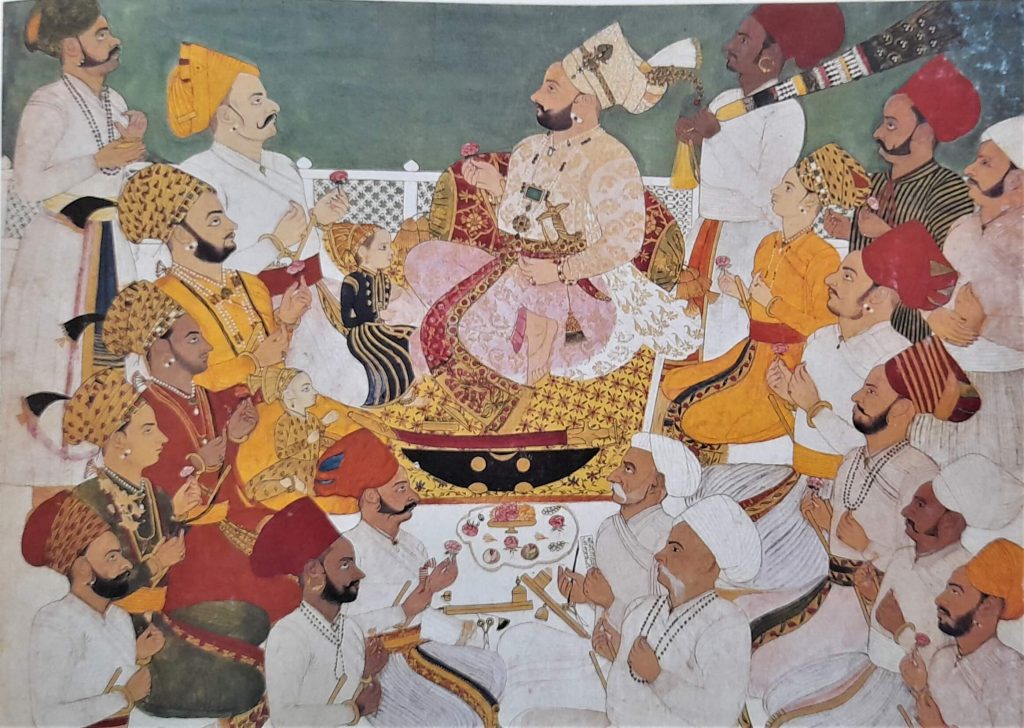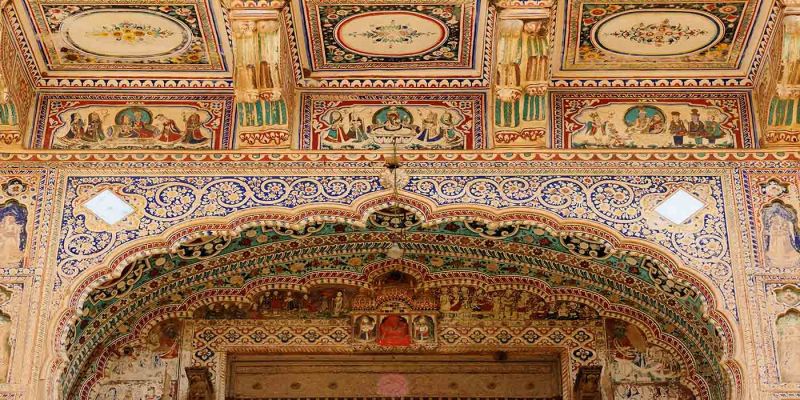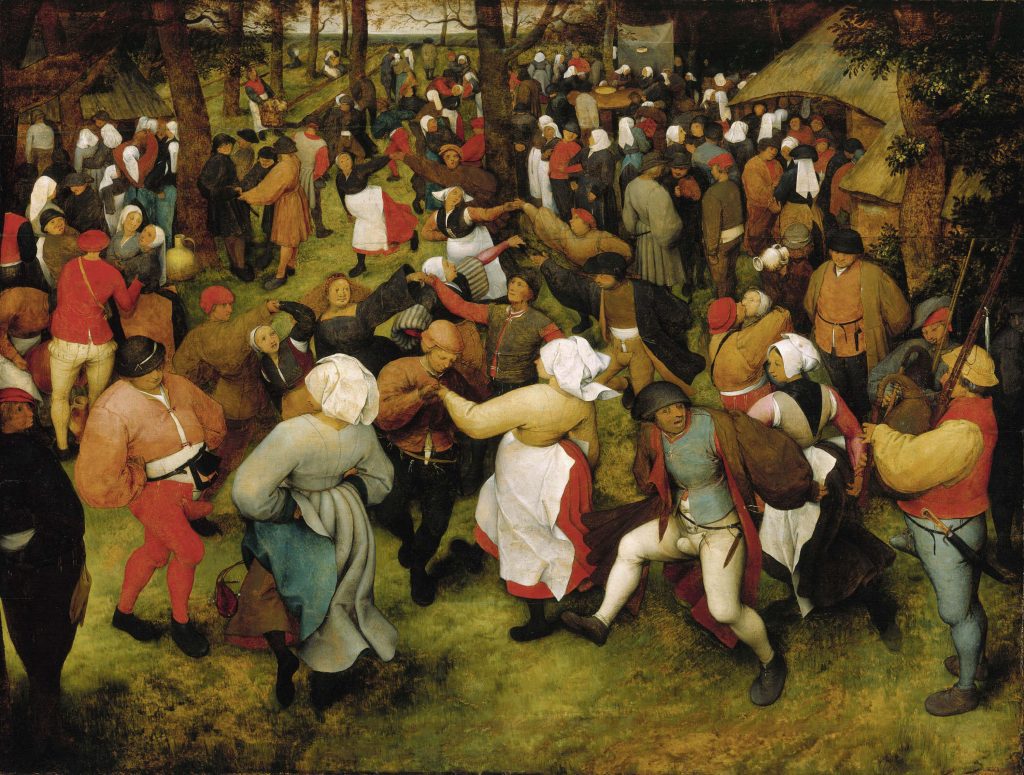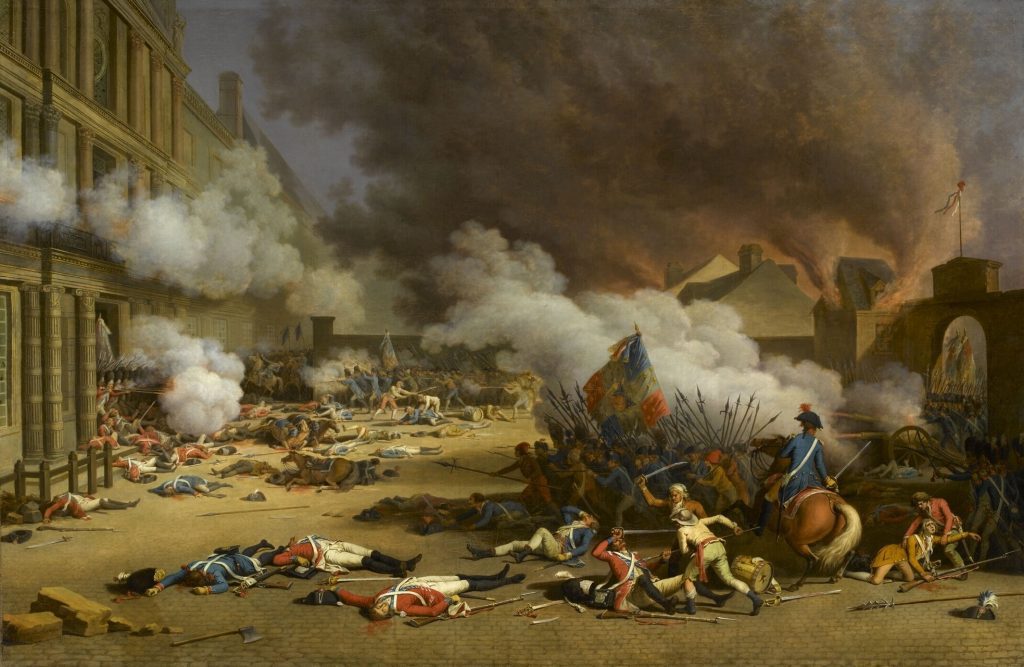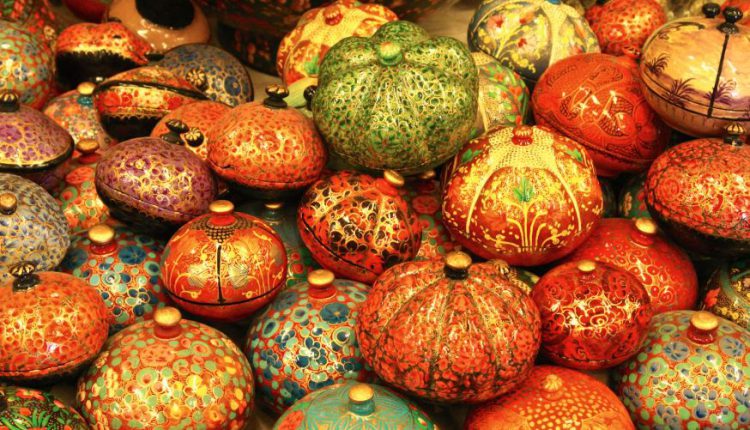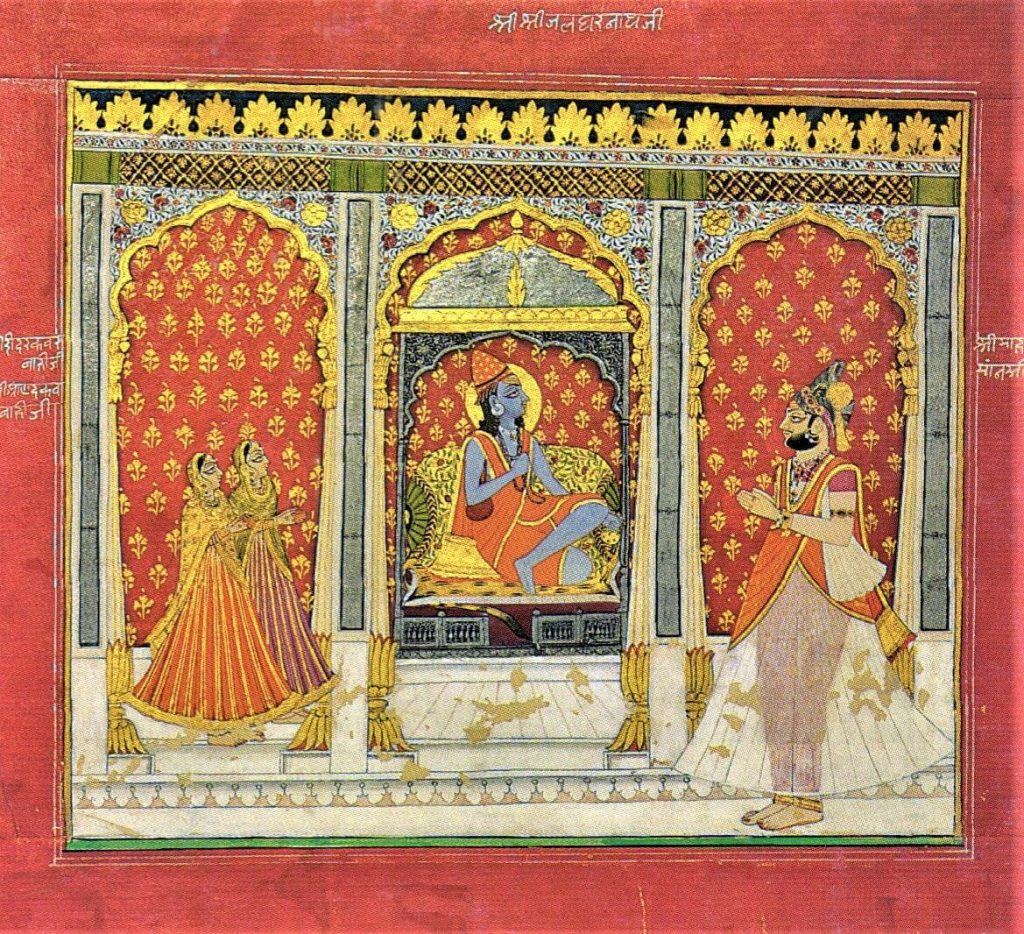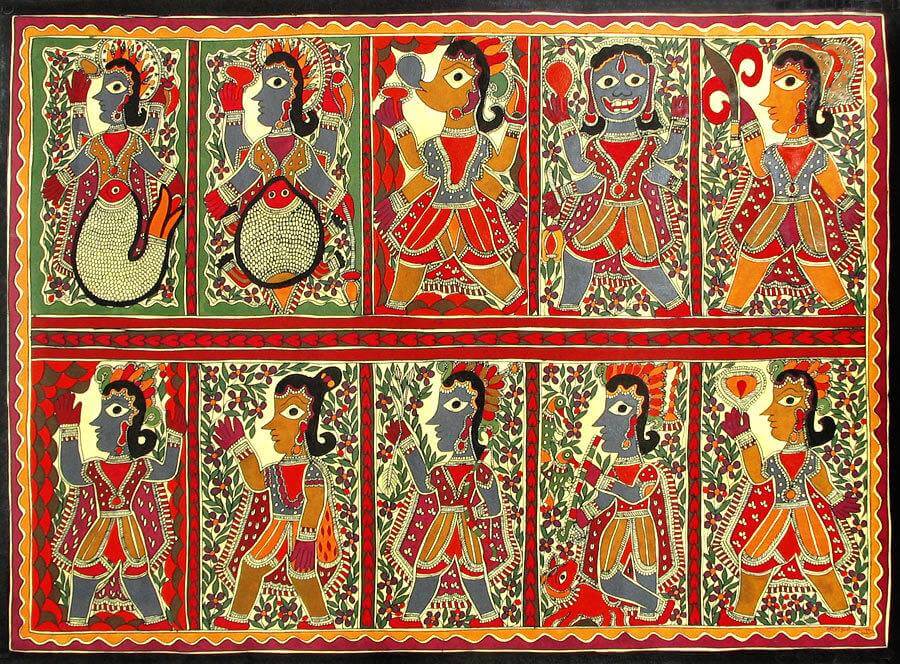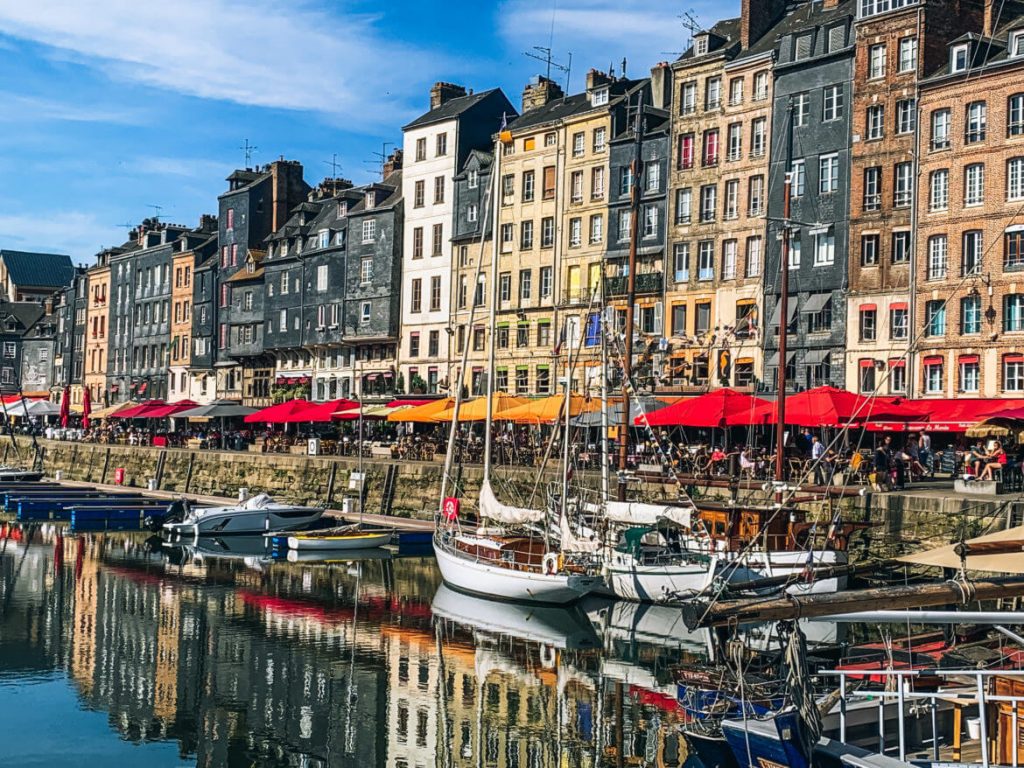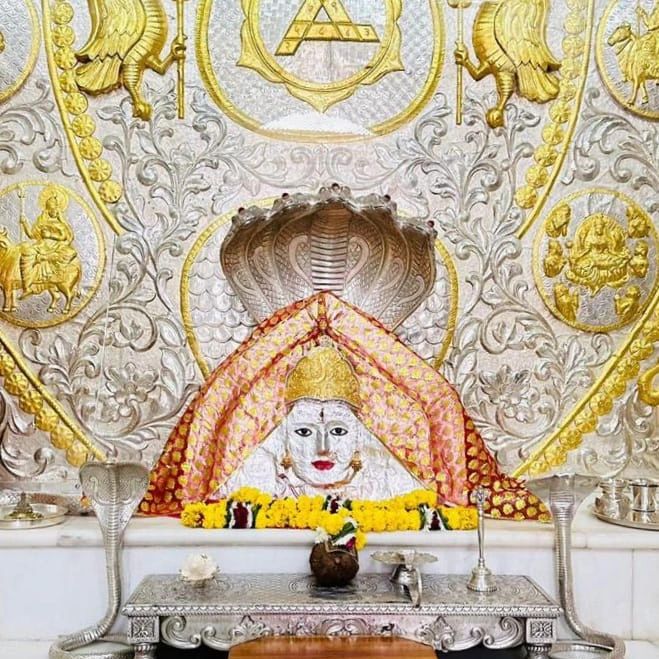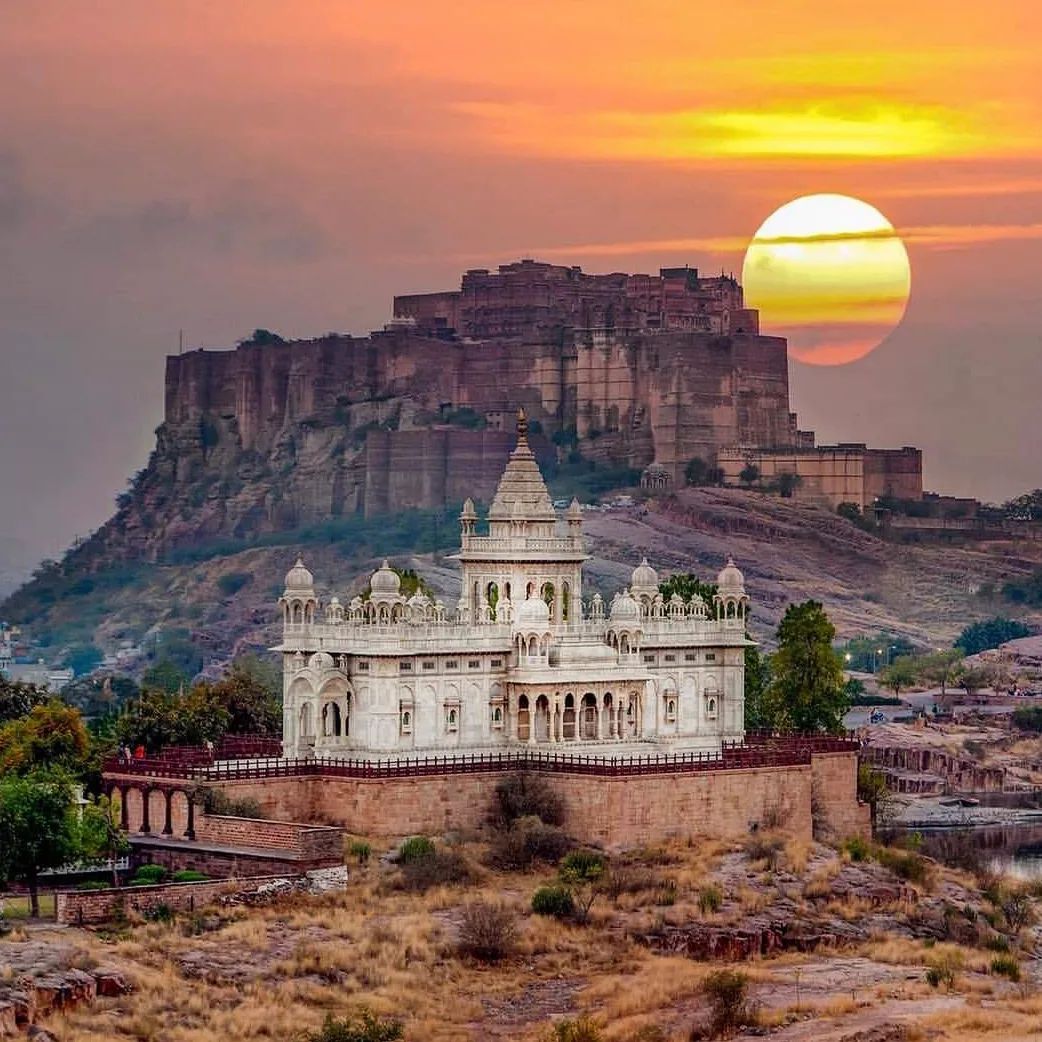Paul Gauguin (1848-1903)
Paul Gauguin was one of the most revolutionary painters of the 19th century, as unconventional in his art as he was in his lifestyle. At the age of 35, he abandoned a respectable business career to devote himself to painting, and his desire for personal and artistic freedom eventually made him an outcast from society. His final years were spent in the South Seas: poor, ill, and often without proper materials for painting.
Gauguin soon reacted against the light-hearted style in which he began his career and turned to weightier subjects. His bold colors and shapes expressed his own inner vision rather than external reality. When he died, Gauguin was virtually forgotten, but an exhibition of his work in Paris three years later revealed his genius, and since then he has been one of the greatest influences on 20th-century art.

THE ARTIST'S LIFE
Stockbroker in the South Seas
When he became a stockbroker at the age of 23, Gauguin seemed to have settled for a conventional middle-class life. But the adventure was in his blood, and 12 years later he risked everything for art.
Paul Gauguin was born in Paris on 7 June 1848. His father Clovis was a radical journalist, and there was radical blood on his mother's side, too - Aline was the daughter of the Peruvian-born feminist and socialist Flora Tristan. But the year of Paul's birth was a bad time for radicals. By November 1848, Louis Napoleon had seized power in France, and his political opponents had a tendency to disappear. Clovis decided to visit his wife's relatives, and the family sailed to Peru in 1849.
Clovis died of a heart attack on the journey from France, but Aline, with Paul and his sister Marie, spent the next six years in Lima under the protection of her great-uncle. Then Paul's grandfather died in France, and the family returned to take up their inheritance in the old man's hometown of Orleans.
Dull, provincial, and thoroughly bourgeois, Orleans was a depressing contrast to colorful, subtropical Peru, and Paul hated it. When he was 17, he did what thousands of restless, adventurous young men had done before him: he went to sea. He worked for three years on a merchant's vessel, and when he became due for military service in 1868, he chose to serve his stint in the navy.
Paul was released from the service in 1871, and it seemed he had got the taste for adventure out of his system. He was 23, and it was time for him, as a young man of a respectable family, to settle down. His mother had died while he was still at sea but had previously arranged for the wealthy banker Gustave Arosa to be Paul's guardian. Arosa was happy to use his contacts to find him a post with a leading Paris stockbroker.

A late starter:
The first self-portrait Gauguin painted dates from about 1885, two. years after he had abandoned commerce for art in his mid-thirties.
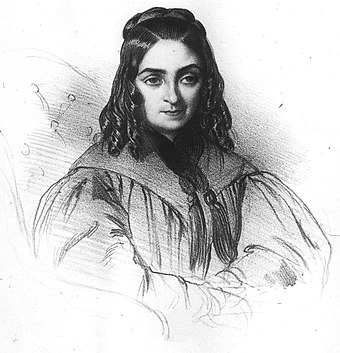
Gauguin's feminist grandmother:
Gauguin's maternal grandmother was the Peruvian-born feminist and socialist Flora Tristan, a woman more given to organizing trade unions and leading demonstrations than to home-making. Her husband was sentenced to 20 years of hard labor for trying to murder her.

Wife and children:
Gauguin and his Danish wife Mette had five children during the first ten prosperous years of their marriage. Mette was a strong character who looked after the children when Gauguin abandoned them - with everything else – for his art.
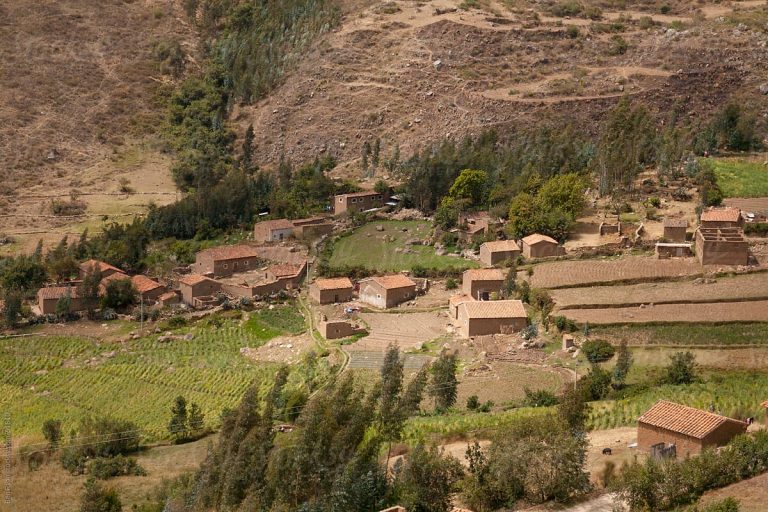
Peruvian childhood :
The taste for colorful, exotic places that ran throughout Gauguin's life began with his childhood in Peru. He was taken there by his parents when a baby and lived there for six years with his mother's family.
A BUSINESS CAREER
Gauguin's clerkship was a comfortable, well-paid job, and it gave him plenty of opportunity for lucrative speculation on the stock exchange. An affluent middle-class future seemed assured. In 1873 he married a Danish girl, Mette Sophie Gad, and they progressed from a fine apartment in town to an even finer suburban house, as Mette regularly produced the next generation of Gauguins. By 1883, he had money, a business reputation, a good home, and five children.
But Gauguin had developed a hobby - he liked to paint. His interest in art was encouraged by his guardian, who had a fine collection of paintings and in whose house most of the best-known painters of the day appeared from time to time. Gauguin was encouraged also by Arosa's daughter, an amateur painter, and in 1874 he had some lessons with the Impressionist Camille Pissarro. But essentially he was self-taught.
At Arosa's house and elsewhere, Gauguin had met the leading Impressionist painters and even started to buy their work. He began to align himself with them, exhibiting in their group shows from 1879 onward. His paintings came in for a fair amount of praise, and they sold quite well again and must have toyed for some time with the turning professional, but in 1882 his mind was made up for him by a stock-market crash. Gauguin's 'secure' job suddenly looked anything but secure. In 1883, confident of his ability to keep his family by painting, he resigned.
Unfortunately, the general climate of bankruptcy and despondency had much the same effect on the art market as on the stock market. By 1884, Gauguin's savings had run out, he had sold scarcely a painting and although a move from Paris to Rouen in Normandy had reduced his household expenses, his family was fast approaching destitution. Mette now took a hand. Her husband had had a year as a painter and failed; now she insisted the family move to her native Denmark.
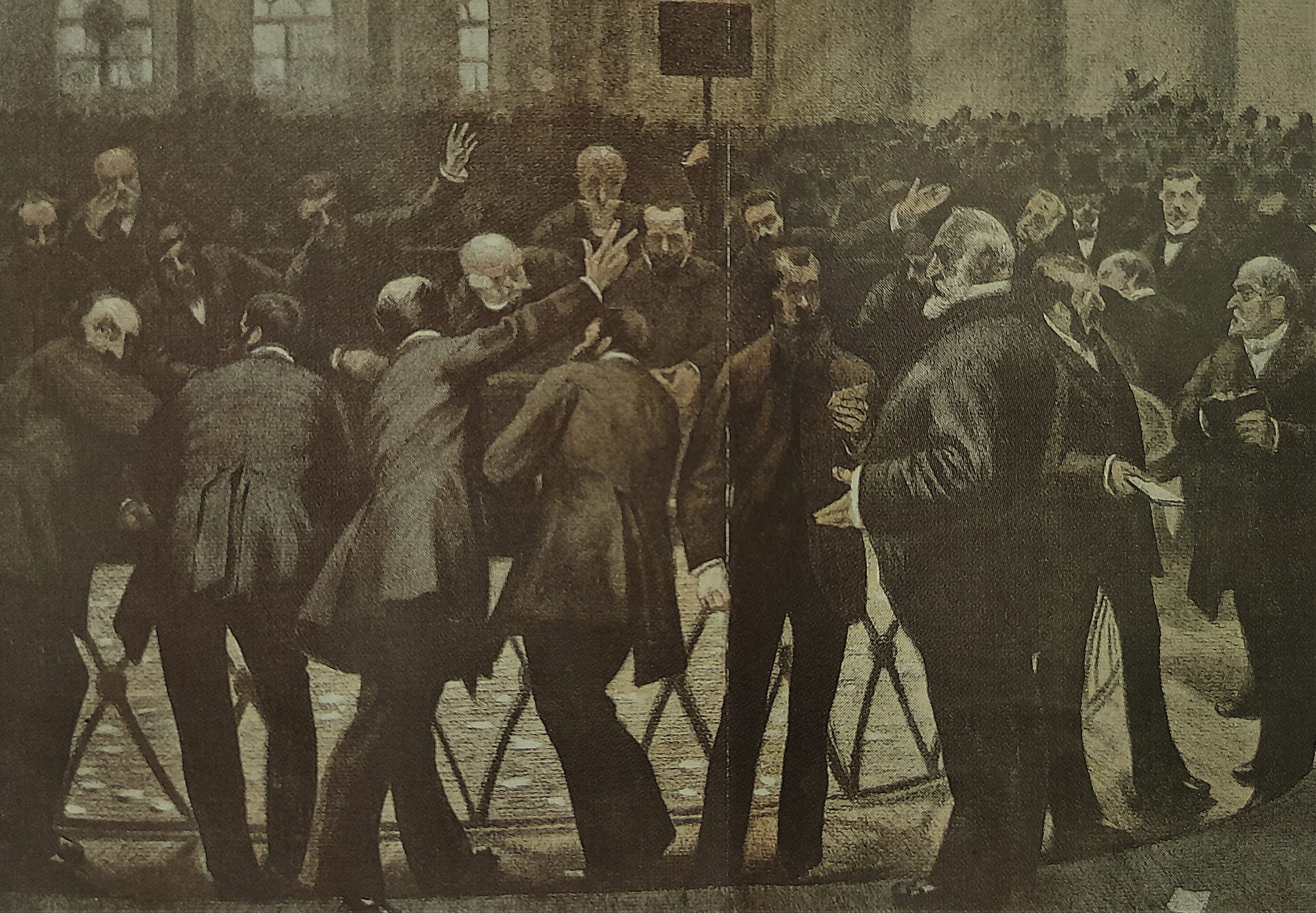
A career in finance:
In 1871 Gauguin began work as a clerk with the firm of Bertin, a leading Paris stockbroker. His career flourished for 12 years (he became Bertin's chief assistant), but he resigned to be free 'to paint every day'.
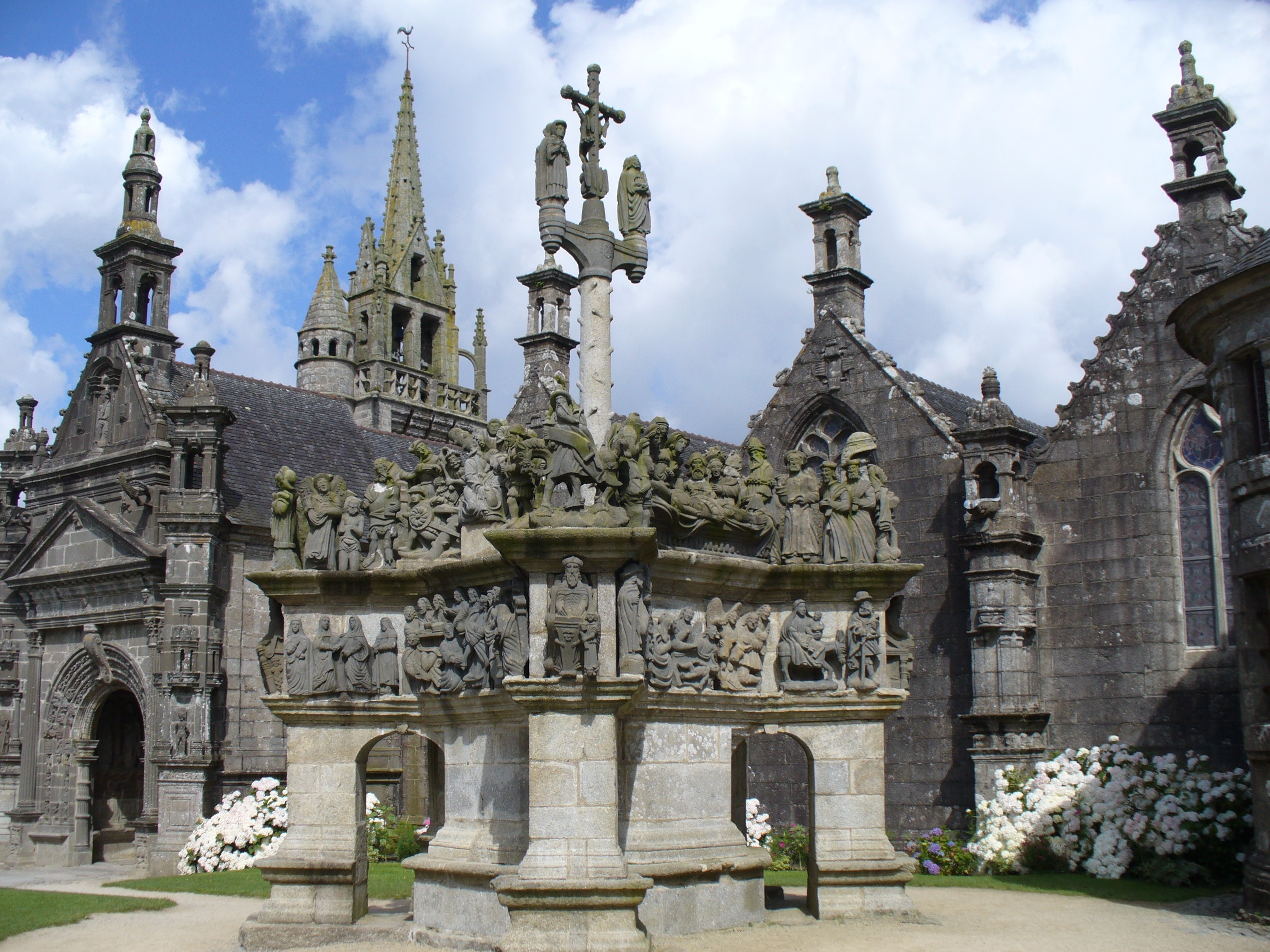
Breton faith:
Gauguin often worked in Brittany - an isolated region of northwest France. It was a place of ancient traditions and simple faith, and the & rugged strength of the people and the landscape appealed to Gauguin. He was particularly inspired by the granite churches, with their medieval carvings.
DESERTING THE FAMILY
But their move was not a success. Although Gauguin found a job as a sales representative for a manufacturer of tarpaulins, he sold no more of his company's goods than he had of his paintings. Besides, his commitment to his art was now becoming total. Gauguin returned to painting and in 1885 left once more for Paris, leaving Mette with four children in Copenhagen. He took six-year-old Clovis with him.
The following year was perhaps the worst in Gauguin's life. By the winter of 1885-6, he was penniless, and he and his son were reduced to living in one miserable room. Cold and undernourished, the boy contracted smallpox: to Gauguin managed to find work as a bill-poster for a railway company. Remarkably, Clovis recovered, but it was the last time Gauguin did anything for his family. From now on, their fate was in Mette's hands.
in June, Gauguin moved once more, to Pont-Aven in Brittany, where he found not only cheap lodging but the company of appreciative fellow-artists. But there was no financial success to match his growing confidence. Returning to Paris at the end of 1886, he almost starved during the winter. The following year, he decided to make a complete break. 'Paris,' he wrote, 'is a desert for a poor man. I must get my energy back, and I'm going to Panama to live like a native.'
Somehow he scraped together the fare, but living like a native' in Panama turned out to mean laboring with pick and shovel in the abortive canal project then underway. After a few weeks, sick with fever, he gave up on Panama and ventured to Martinique in the French West Indies. Four months later, ill health and poverty forced him back to France, and he returned to Brittany.
Gauguin at Pont-Aven
The town of Pont-Aven in Brittany was already a well-known resort for artists when Gauguin first went there in 1886, but today it owes its fame almost entirely to its association with him. Gauguin was too absorbed in his work to take much part in the bohemian social life of the town, but he was respected by the other artists for his strength of character. Between 1886 and 1890 he spent much of his time in Brittany, seeking the seclusion he needed to develop his work.

The artists' inn:
Gauguin - sitting on the kerb, third from the right - poses with fellow artists outside the Pension Gloanec, the favorite hotel for painters.
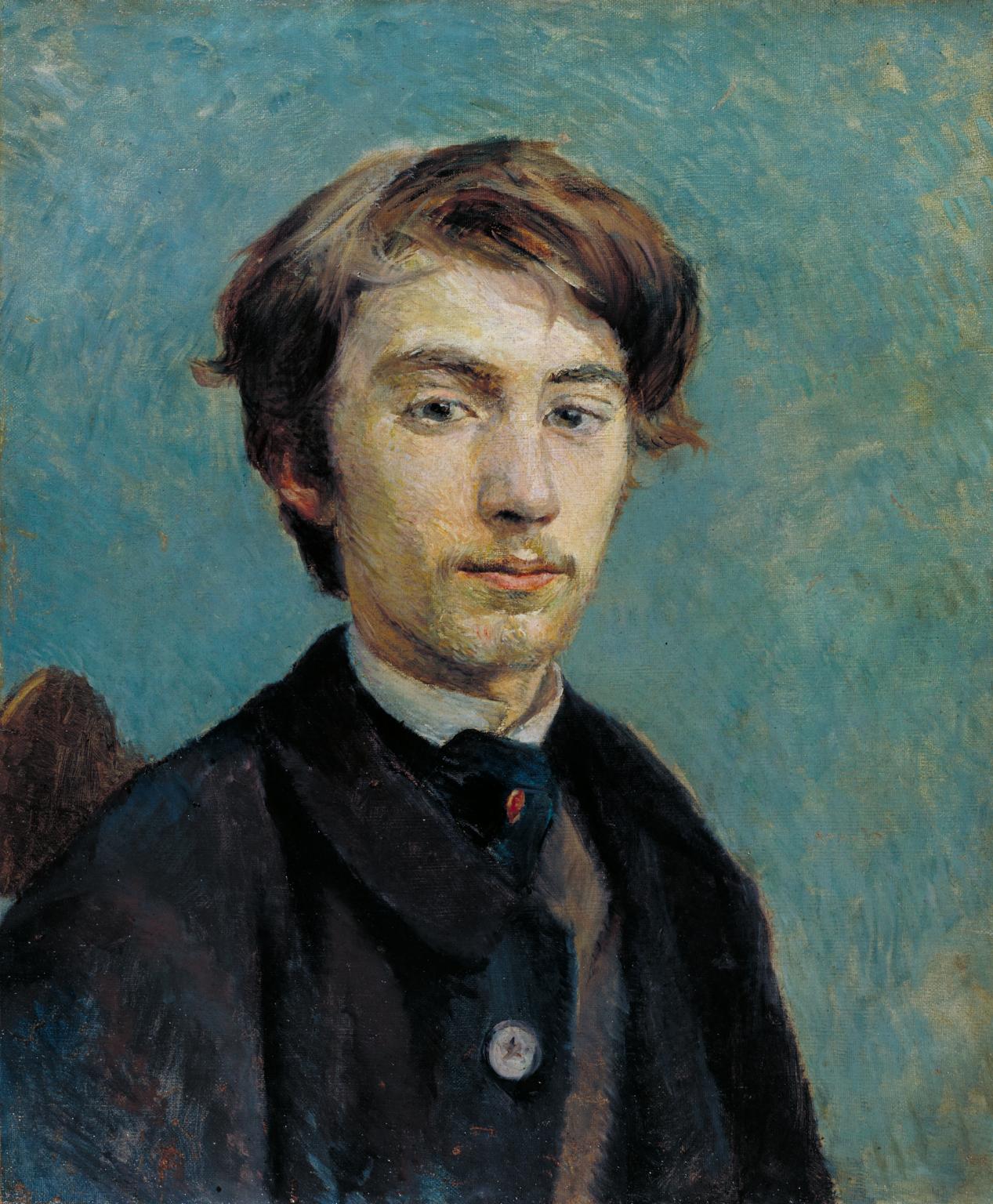
Emile Bernard:
Bernard (1868-1941), who had studied in Paris with Lautrec and Van Gogh, worked closely with Gauguin at Pont-Aven in the late 1880s.
A VISIT TO VAN GOGH
Creatively, this was a vital period. At the age of 40, he was finding himself at last as a great and original painter. But the Brittany winters depressed him. In October 1888, he accepted an invitation from Vincent van Gogh, whom he had met two years earlier in Paris, to pass the winter with him at Arles, in the South of France. But Gauguin had been there only two months when Van Gogh went famously insane and threatened him with a razor. There was nothing for it but to return to Paris.
Over the next few years, Gauguin alternated between Paris and Brittany, producing some of his best work. His reputation among his contemporaries had never been higher, but he was still desperately short of money, and he had never lost his yearning to return to the tropics. Finally, he settled on another French colony – Tahiti - and on 1 April 1891, he sailed from Marseilles.
At first, Tahiti was not what he had hoped for. He got a friendly reception from the Governor, and an audience was arranged for him with the last native king, Pomare V, who Gauguin hoped would prove a source of commissions. But Pomare died suddenly - of drink - a few hours before the audience. Soon Gauguin was disgusted with the capital of Papeete. 'It was Europe all over again,' he wrote, "just what I thought I had broken away from-made still worse by colonial snobbery.'
In the country district of Mataiea, however, Gauguin found the peace he wanted - and a young Tahitian girl to share his hut. Even in paradise, though, the need for money reared its ugly head. Despite his dreams, Gauguin could not live for free. He lacked the skills to fish or to farm, and in a community of self-sufficient families, there was no real possibility of buying food. He had to rely on expensive - and incongruous - European can and dried produce, bought in Papeete. A spell of ill-health made further inroads into his savings and in 1893 he had to apply to the Governor to have himself repatriated to France.

Tahiti's last king:
Gauguin hoped that Pomare V would buy his work, but the king died suddenly before they had a chance to meet - leaving the artist in deep financial trouble.
RETURN TO TAHITI
It was a humiliating return, but the canvases that Gauguin brought back with him persuaded a leading Paris gallery owner to give him an exhibition. Though sales were poor, Gauguin found himself the centre of the art world's interest. And he had a financial windfall: an uncle back in Orleans died and left him enough money to set up his own studio in Montparnasse. But he was determined to return to Tahiti and left France for the last time in July 1895.
The eight years that remained to him were great ones for his art, but Gauguin's life was often miserable. Most of the time he was desperately short of money and could rarely afford the stays in hospital that his worsening health - due to syphilis demanded. In 1897, he even attempted suicide. The following year, he contemplated abandoning painting and had to take a miserable job as a draughtsman to pay off at least some of his debts.
Disgusted by colonial society and its effects on the Tahitians, Gauguin took to writing vitriolic articles for a local newspaper. In 1901, he abandoned the island altogether and made the 800-mile journey to the Marquesas Islands, where he settled in the village of Atuona. There, he built his last dwelling, 'The House of Pleasure', as he called it. Money, at last, was coming from Paris, and Gauguin was working happily as well as hard. But he was still making enemies. His attacks on the colonial administration continued and he waged a continuous war with the Catholic Church.
In 1903, the authorities took their revenge. Gauguin was sentenced to three months imprisonment for 'defamation'. He never served the sentence. On 8 May 1903, aged 54, he died while awaiting the result of an appeal. The local bishop wrote an uncharitable epitaph. "The only noteworthy event here has been the sudden death of a contemptible individual named Gauguin, a reputed artist, but an enemy of God.' Posterity had a different verdict.
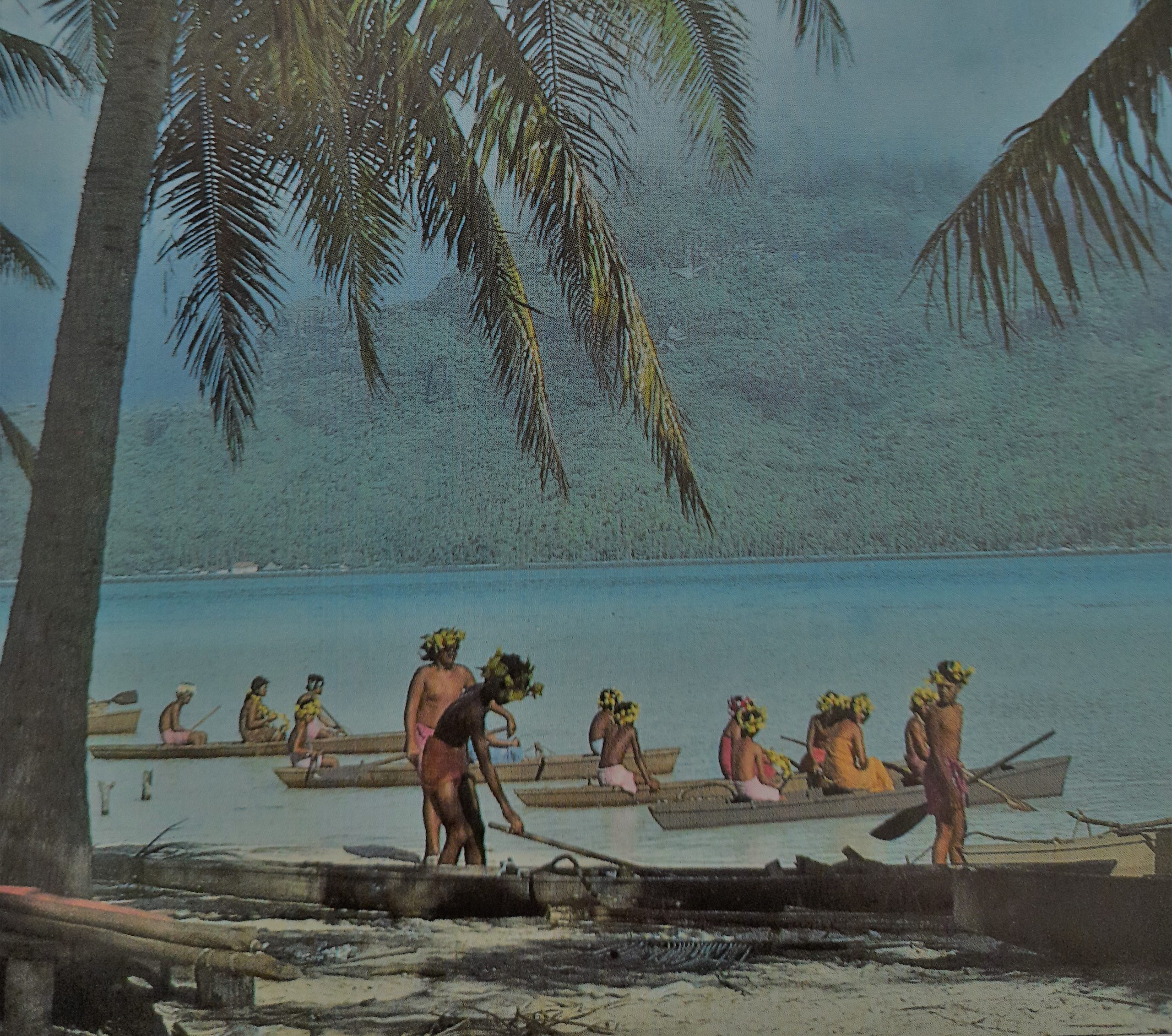
South Sea paradise:
Gauguin sailed to Tahiti in 1891, hoping to find the tropical paradise of his imagination. He spent eight years on the island, painting his greatest works there.
Annah the Javanese
In 1893 Gauguin returned to Paris after his first stay in Tahiti and set up home with Anne Martin, known as Annah the Javanese, 'a superb mulatto with glowing eyes, as a contemporary described her.
Gauguin had 'picked her up in Paris', a replacement for the native girl he had left behind in Tahiti. In 1894 Gauguin got into a brawl with some sailors at Concarneau near Pont-Aven when they made fun of Annah, and he broke his ankle.
While he was recovering in Brittany - his injury never properly healed - Annah returned to Paris and ransacked his studio. Gauguin never saw her again.
In this portrait, :
dated 1893, Annah is shown with her pet monkey, which she took everywhere with her. The candor of her pose and expression reveal clearly the pleasure Gauguin took in her physical charms.

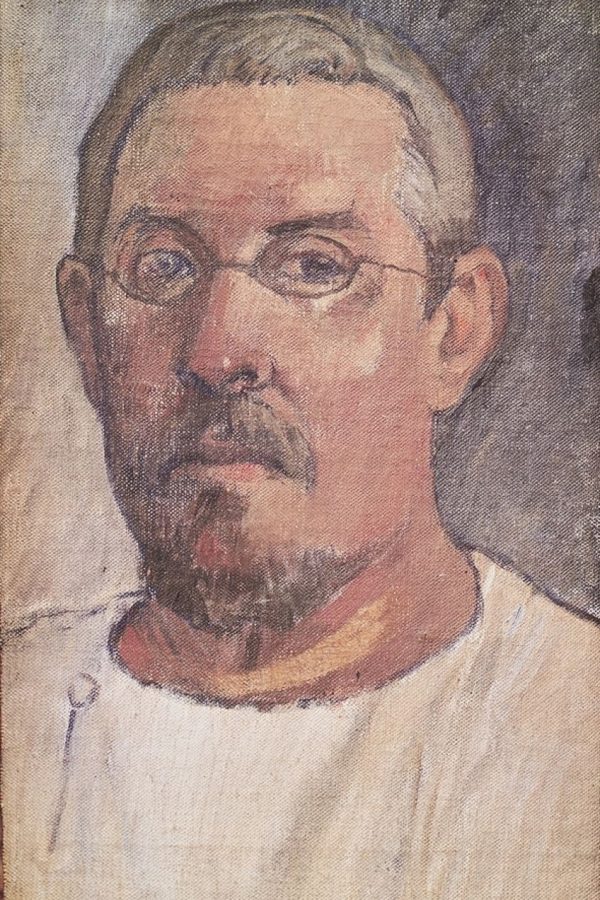

Death in the Marquesas:
Gauguin spent his last two years in the Marquesas Islands, about 800 miles from Tahiti. His final self-portrait, painted in 1903 – the year he died - shows him facing the end with calm acceptance. His simple grave lies half the globe away from his native France.
THE ARTIST AT WORK
Mysteries of Paradise
The exotic culture of the South Sea Islands held a powerful fascination for Gauguin, who chose strange, vivid colors to express the beauty and the mystery he experienced there.
Paul Gauguin was in his early twenties when he took up painting. At first art was no more than a hobby, but he admired and bought the work of the early Impressionists, and based his own style on theirs. As his dedication grew, however, Gauguin soon realized that although these artists, with their bright colours and bold technique, had freed nointing from traditional bonds, Impressionism I was limited in scope. Gradually he moved forward to develop the ideas that made him with Van Gogh and Cézanne - one of the greatest of the Post-Impressionist artists.
The Impressionists had painted the natural world with vividness and directness. But Gauguin was fascinated by ideas more than appearance and e wanted his art to express strong emotions: 'Where 7 does the execution of a picture start, where does it 1 end? At the moment when intense feelings are found in the depth of one's being when they erupt, and thought flows forth like lava from a volcano. The cold and rational calculation has nothing to do with this eruption, for who knows 1 when, in the depths of his being, the work was e begun, perhaps unconsciously?'
To express such intensity of feeling, Gauguin had to develop a radically new style of painting. He rejected the idea that a painting had to represent something we can see in the real world, and drew fresh inspiration from non-European art - Gauguin was one of the first artists to take a serious interest in primitive cultures. He spoke of his own 'savage blood', and, perhaps recalling his childhood in Peru, he felt a strong affinity for the vigor of prehistoric Central and South American art. He saw numerous examples of this type of work at the Paris World's Fair of 1889.

Martinique Landscape (1887):
After several years painting in the Impressionist manner, Gauguin visited the island of Martinique in the French West Indies. The tropical sunlight triggered a change in his style – he used bolder and brighter colors.
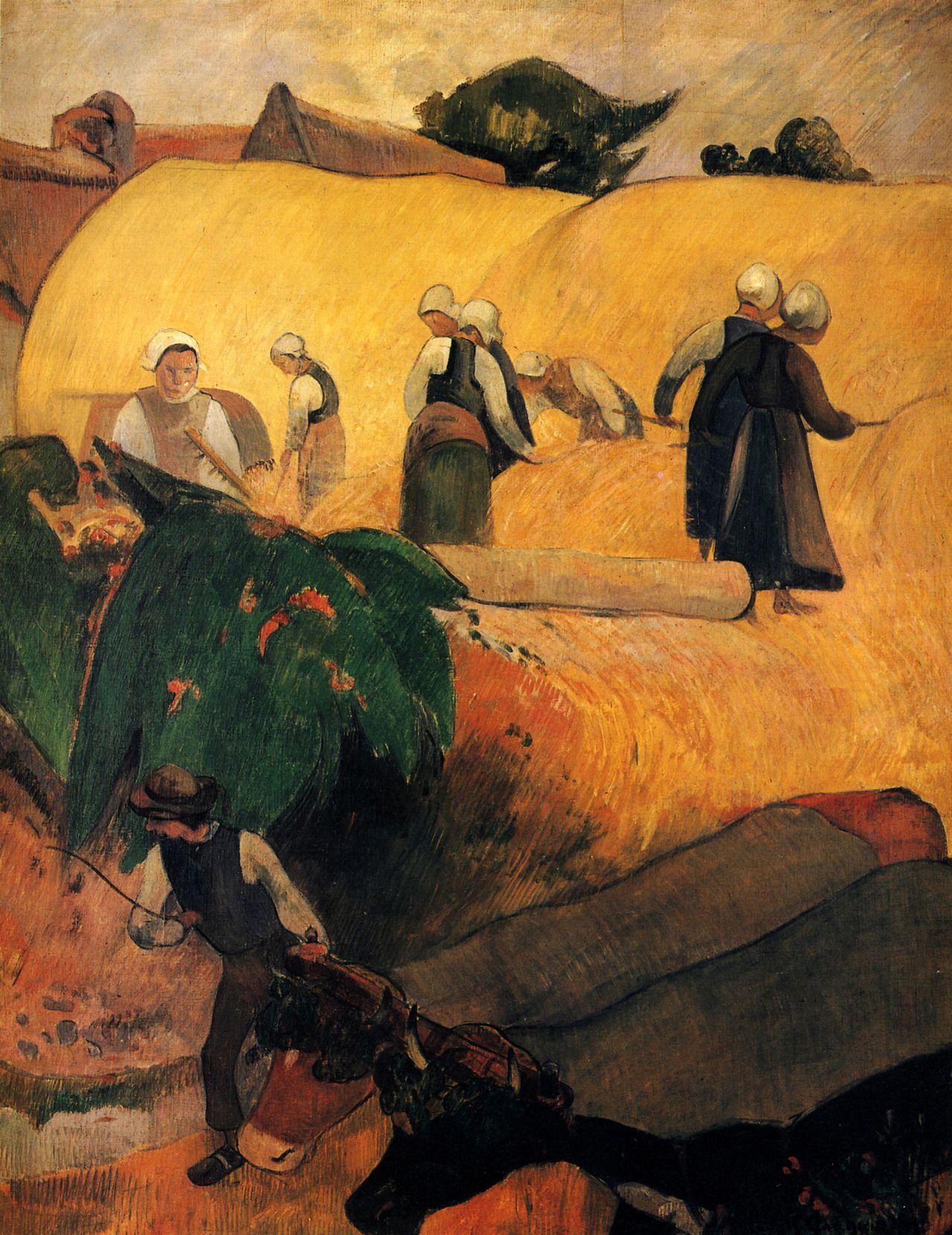
Harvest in Brittany (1889):
This image of peasant women toiling amongst mountainous haystacks was painted at Pont-Aven, in Brittany. From this time onwards, people rather than landscapes dominated Gauguin's canvases.

The Spirit of the Dead Watching (1892):
Gauguin was fascinated by the traditional culture he encountered in Tahiti, and especially by the islanders' spiritual beliefs. The idea for this picture came from a genuine incident: Gauguin returned home from buying lamp oil one night to find his 13-year-old wife Teha'amana lying awake in the dark, terrified of ghosts.
Teha'amana believed that spirits known as tupapaus entered unlighted houses at night. So Gauguin depicted the ghost as Teha'amana would have imagined it - like an ordinary little woman stretching out her hand to. seize the prey'.
REVOLUTIONARY COLOUR
Gauguin also looked for inspiration to Egyptian and Cambodian sculpture, to medieval art, and to Japanese prints. He collected postcards of painting and sculpture in a way that is now commonplace among artists and students, but which at the time was novel. In the expressive power of his color, however, Gauguin went beyond any of his sources. The Vision after the Sermon, one of his most revolutionary paintings, used bright red completely unnaturalistically to set the emotional tone of the painting - one of visionary intensity.
The Vision after the Sermon was painted at PontAven, where Gauguin briefly inspired a group of like-minded artists. But his personal style reached its fullest flowering in Tahiti. Gauguin's taste for religious and symbolic themes was richly sustained by the native traditions; the bright light produced the strong colors he loved, and the exotic beauty of the islanders made an overwhelming impact on him. He thought that his native models 'possessed something mysterious and penetrating, not beauty in the strict sense of the word. They move with all the suppleness and grace of a sleek animal, giving off that smell which is a mixture of animal odor and the scents of sandalwood and gardenia.'
One of the most characteristic features of Gauguin's work in Tahiti is his use of flat, frieze like compositions, in which he was perhaps influenced by Egyptian art. This kind of composition, in which Gauguin's imposing figures - 'indescribably august and religious in the rhythm of their gestures' - are arranged across the foreground, with little sense of depth, creates a mood of solemn majesty.
Gauguin's technique in the Tahiti paintings was no less distinctive than his composition. Materials were not easily available, so he often had to use coarse sacking rather than proper canvas, spreading his paint thinly to make it go further. From adversity, he extracted inspiration, for the limitations of his materials forced him to paint with a rough vigor appropriate to his bold vision.
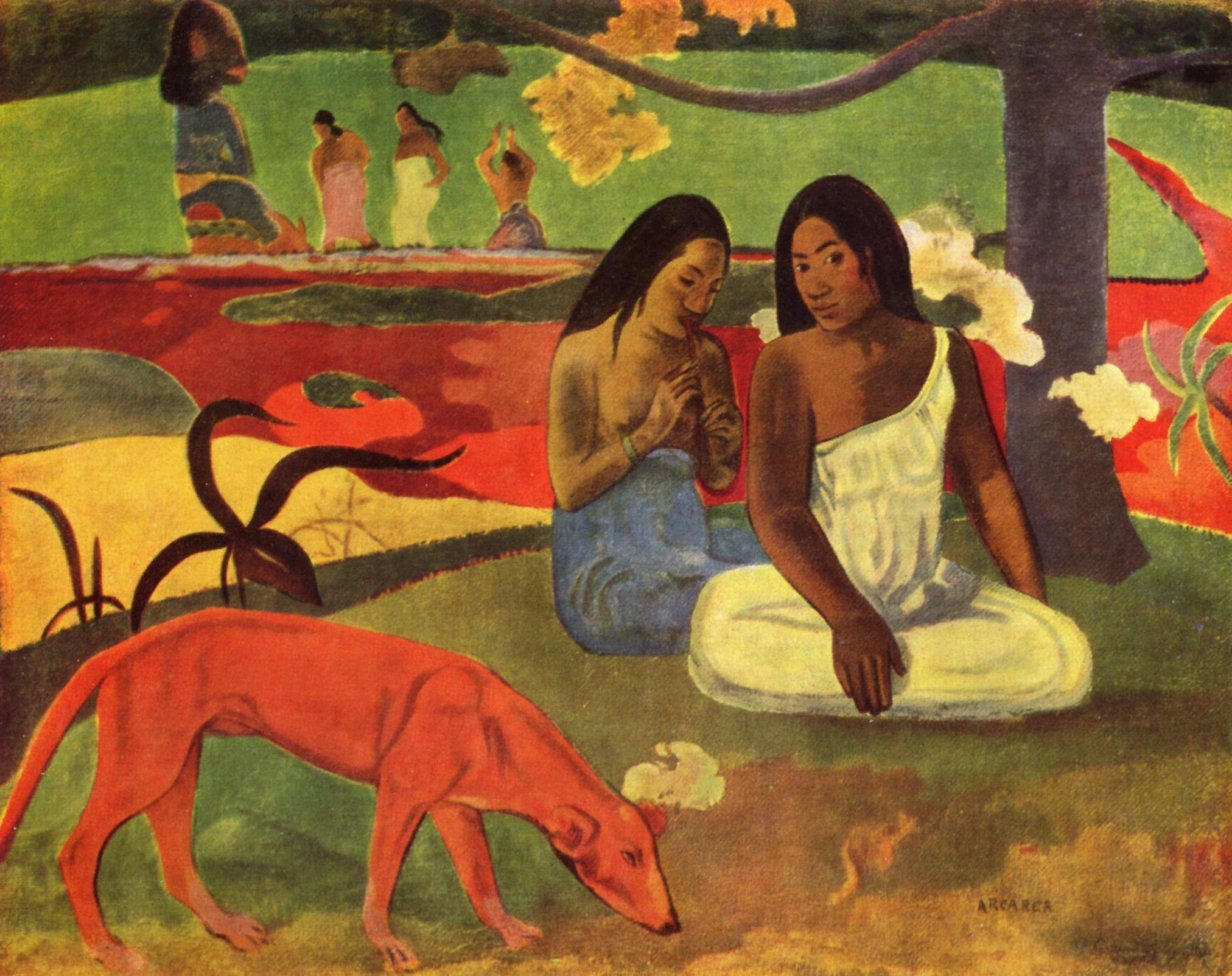
Arearea (1892):
This decorative image, with its simplified shapes and intensified color, evokes the relaxed, unhurried life which Gauguin sought in the South Sea Islands.
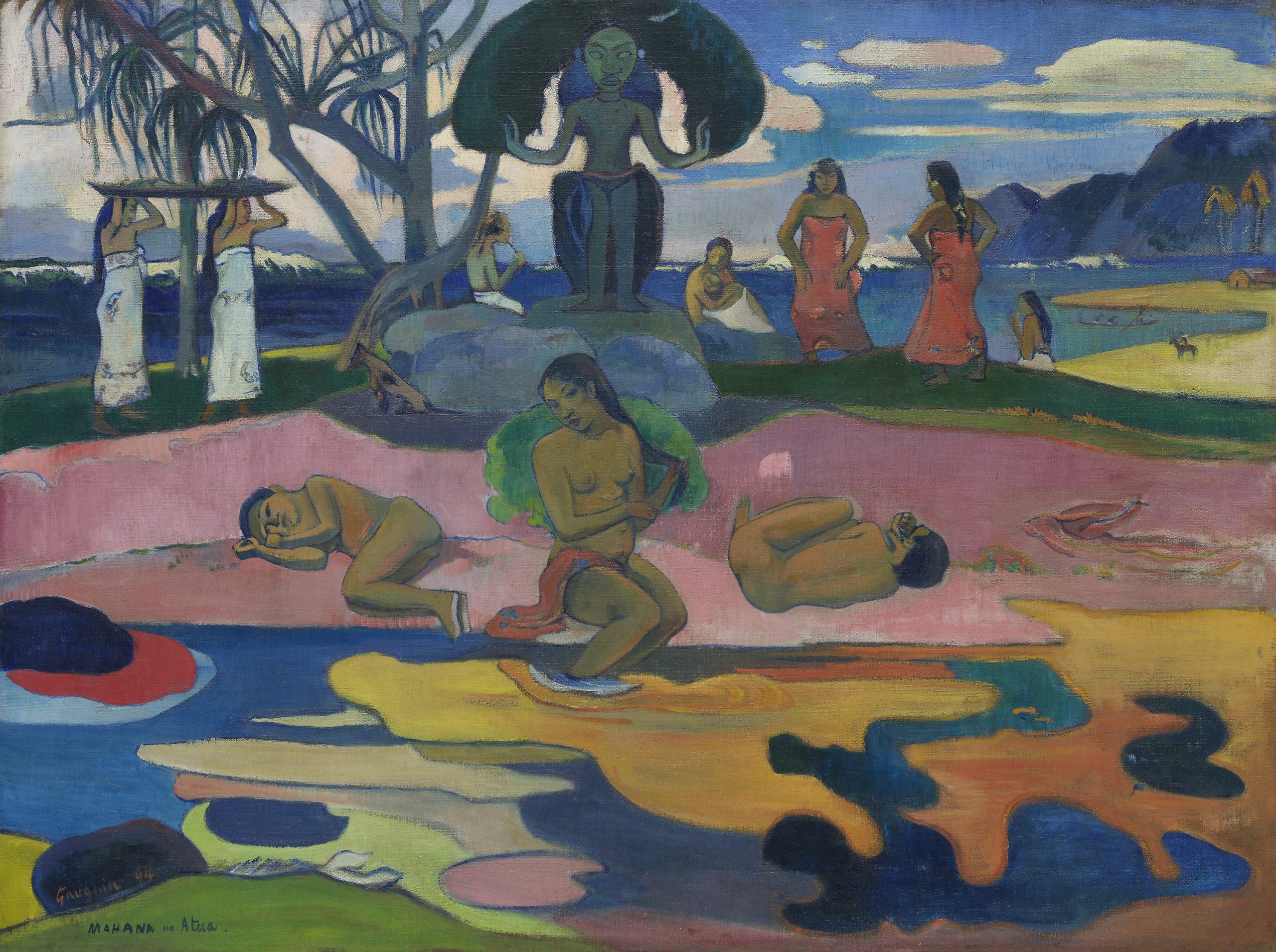
The Day of the God (1894):
Gauguin painted this exotic Tahitian scene in Europe, the year before he returned to the South Seas for the last time. The brooding idol and the strange postures of the women summon up the mysteries of Tahitian mythology which so fascinated him. But the beautiful colors are chosen for their decorative as well as an expressive effect: the rippling waters of the lagoon form a vivid, abstract pattern.

Self-Portrait (1889) :
Gauguin combined his critical eye and powerful line with a taste for caricature - as in this striking self-portrait. Religious emblems are in generous supply: a halo hovers above Gauguin's head, he holds a snake in his right hand, and the apples of the Garden of Eden hang beside him. These biblical symbols of good, evil, and temptation are set in a decorative framework.
Gauguin's Inspiration
'A deep feeling can be interpreted instantly; dream over it, seek its simplest shape.'
'When my wooden clogs echo on this granite, I hear the muffled, heavy, and powerful note I am seeking in painting.
'I have decided on Tahiti ... and I hope to cultivate my art there in the wild and primitive state.'
Gauguin's carving:
Gauguin was not only a painter – he was also skilled at wood carving, pottery, and sculpture. In this boldly executed carving of Eve and the Serpent (1896), he mingles biblical images with obscure Tahitian symbols. The letters PGO are a shortened form of his signature.
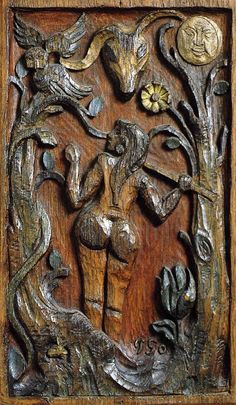
IMPACT ON MODERN ART
When Gauguin died in 1903, very few people would have agreed with his words in a letter to his wife: 'I am a great artist and I know it. It is because I am, that I have endured such suffering.' Three years after his death, however, 227 of his works were shown in a major exhibition in Paris; this firmly established his reputation among more progressive artists and his subsequent influence on 20th-century art has been immense. The emotional impact of his work and his complete dedication to art - whatever the cost of personal suffering - have made him, like his friend Van Gogh, one of the cult heroes of modern times.
COMPARISONS
Primitive Worlds
Throughout the 19th century, many artists moved away from traditional Western European art to seek new inspiration from ancient cultures. Behind their interest in primitive art lay the desire to create pictures of an innocent world, untouched and uncorrupted by civilized society. Just as Gauguin painted his Tahitian paradise, Hicks and Rousseau created their own visions of unspoiled worlds.

Edward Hicks (1780-1849):
The Peaceable Kingdom A Quaker preacher, Hicks made over 100 versions of his vision of brotherly love.

Henri Rousseau (1844-1910):
Tropical Storm with a Tiger Rousseau was the most famous of all naive - untrained - artists, renowned for his jungle fantasies.
THE MAKING OF A MASTERPIECE
Where Do We Come From?
What Are We?
Where Are We Going To?
Gauguin painted this vast canvas in his Tahitian hut in December 1897. He was in a state of emotional anguish. Depressed by the death of his favorite daughter Aline, he was continually ill with fever and conjunctivitis, and too poor to buy food, let alone medicine. Suicide seemed the only way out. But as he later wrote, 'I wanted to paint a large canvas and put all my energy into it before dying.
The result was the biggest picture he ever painted - a final testament Summing up his ideas about the mysteries of human life. Gauguin worked on the painting 'day and night, at fever pitch and as soon as he had finished it, tried to poison himself with arsenic. But Gauguin survived. Soon afterward he wrote to a friend in France explaining the painting's message (summarized, with his own drawings, below).
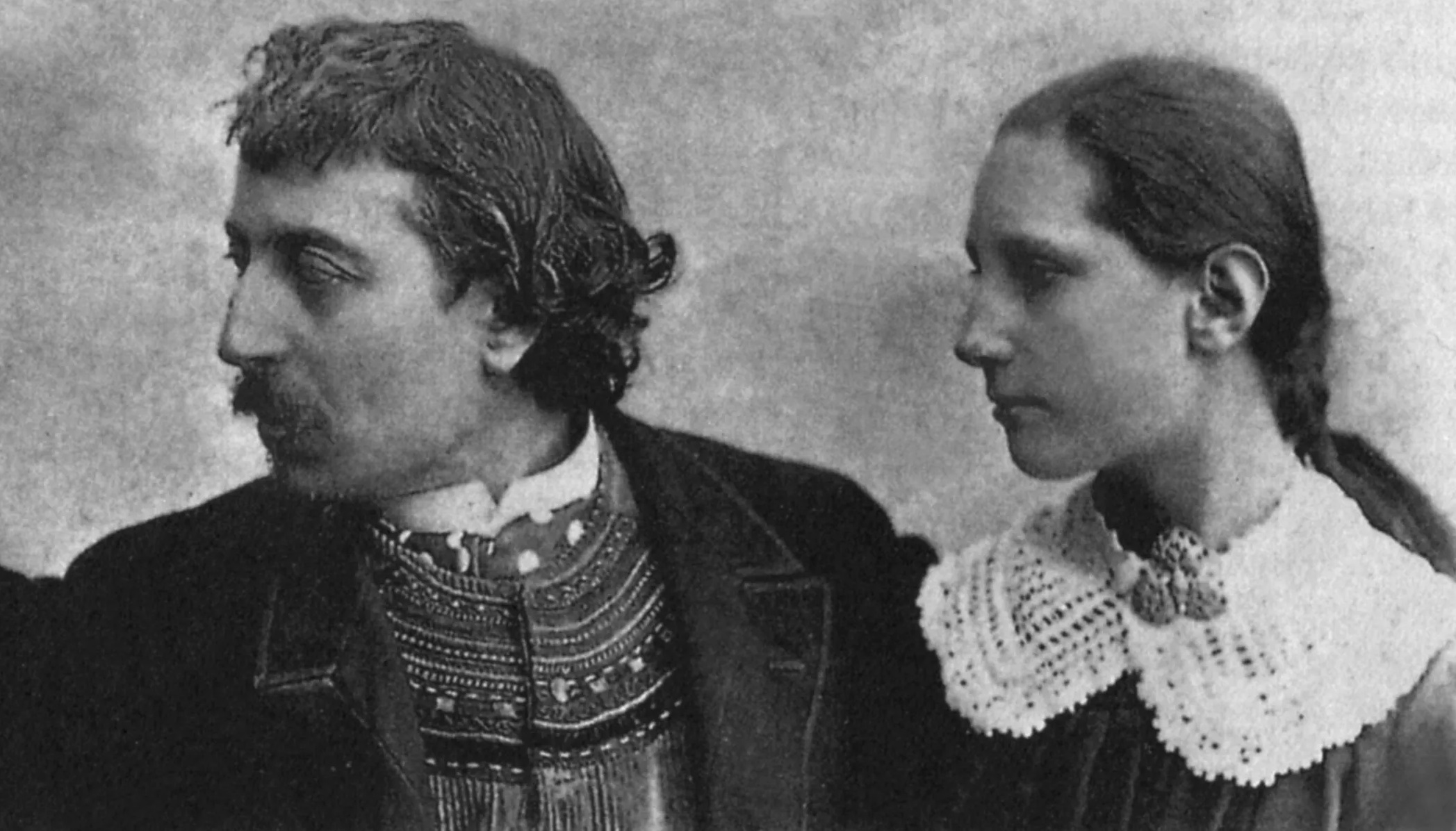
Death of a daughter :
In March 1897, Gauguin learned that his 20-year-old daughter Aline had died in Copenhagen. Although he had abandoned his family years before, he was devastated by the news. 'I have lost a daughter ...I love God no longer,' he wrote. It was the start of the despair that led to a suicide attempt at the end of the year.
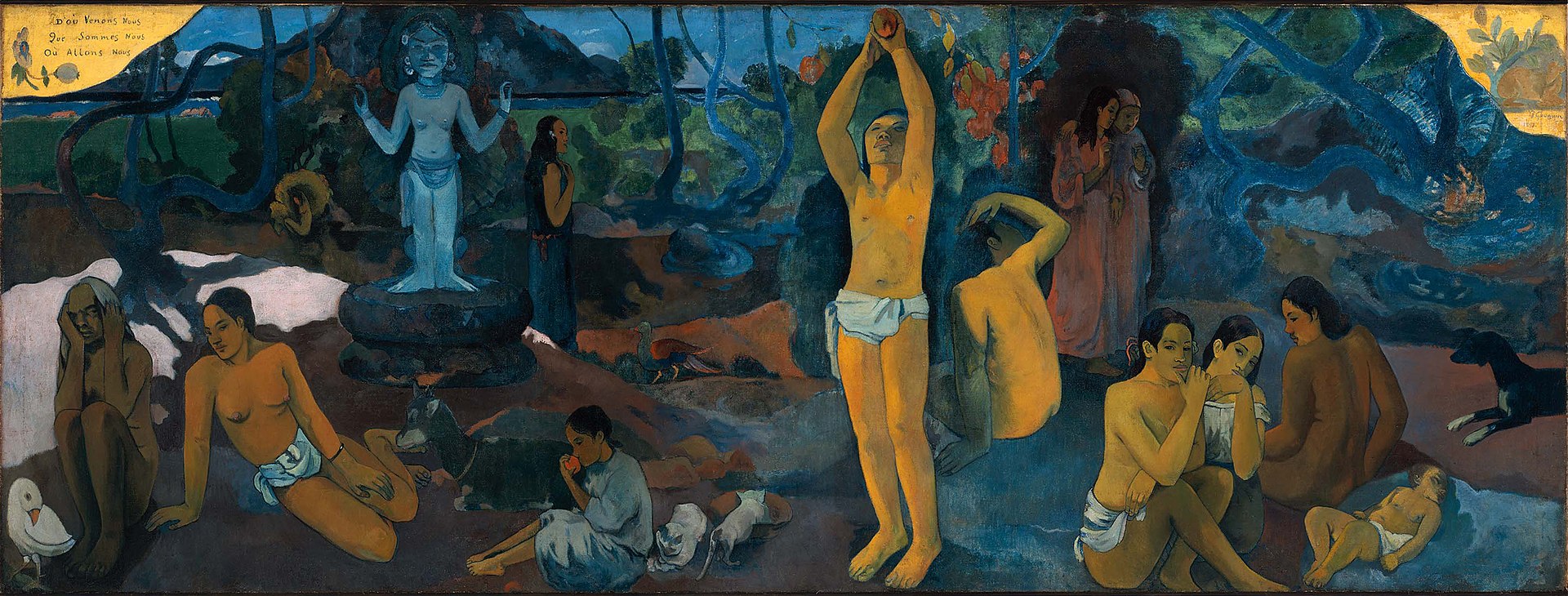

Figures from the past :
The complex composition of Where Do We Come From? is, in fact, a combination of several previous paintings. The crouching woman and strange white bird' in the left-hand corner also appear in this picture of the legendary character Vairumati, which Gauguin had painted earlier in the year.
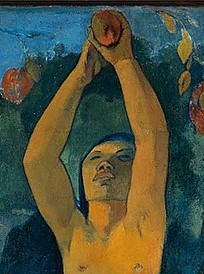
The fruit of life:
The pivotal figure in Gauguin's allegorical life-cycle reaches up for fruit. Though the action repeats Eve's in the Garden of Eden, the fruit is mango, not an apple.
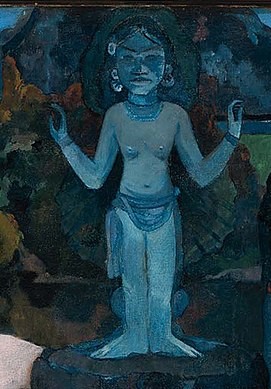
Painted idols :
The images of Tahitian gods which appear in Gauguin's paintings are loosely based on Polynesian idols such as this stone carving. The artist made his own interpretations of the island's religious imagery. According to his account, the uplifted arms of the idol in Where Do We Come From? are pointing out the Beyond - reminding us of the inevitability of death.
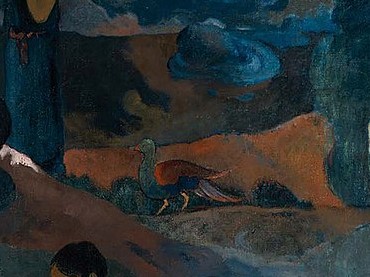
Tahitian wildlife :
Colourful animals and birds abound in the painting. But it is not certain whether they all have symbolic meanings, or are just exotic details.
Gallery
Gauguin's paintings bear witness to his search for a primitive, spiritual lifestyle. As early as 1886 he had abandoned 'civilized' Paris for the Breton countryside, and his quest continued in the remote South Sea Islands. In 1888, he painted his first mature work, Vision after the Sermon, while living among the peasants of Brittany. Like the Yellow Christ, expressed his own feelings about religion in a distinctive, non-realist manner, with bold colors and outlines.
During his first visit to Tahiti, Gauguin painted Girl with a Flower, Women on a Beach, and The Market. But he was soon disillusioned by colonial society and left the island for two years.
On his second visit, poverty and disease nearly broke his spirit, and the great allegory Where Do We Come From? was intended as a final meditation on life. But Gauguin survived his subsequent attempt at suicide. Late paintings such as The White Horse and Breasts and Red Flowers show a newfound lyrical harmony.

Vision after the Sermon 1888:
In a Breton churchyard, peasant women experience a vision of Jacob - the father of Israel - wrestling with an angel. The Old Testament story may have been the subject of a sermon delivered by the priest who appears on the right. The blending symbol with reality, Gauguin frames the blood-red field of a spiritual battle with the women's white headdresses and separates them from the vision with a tree.
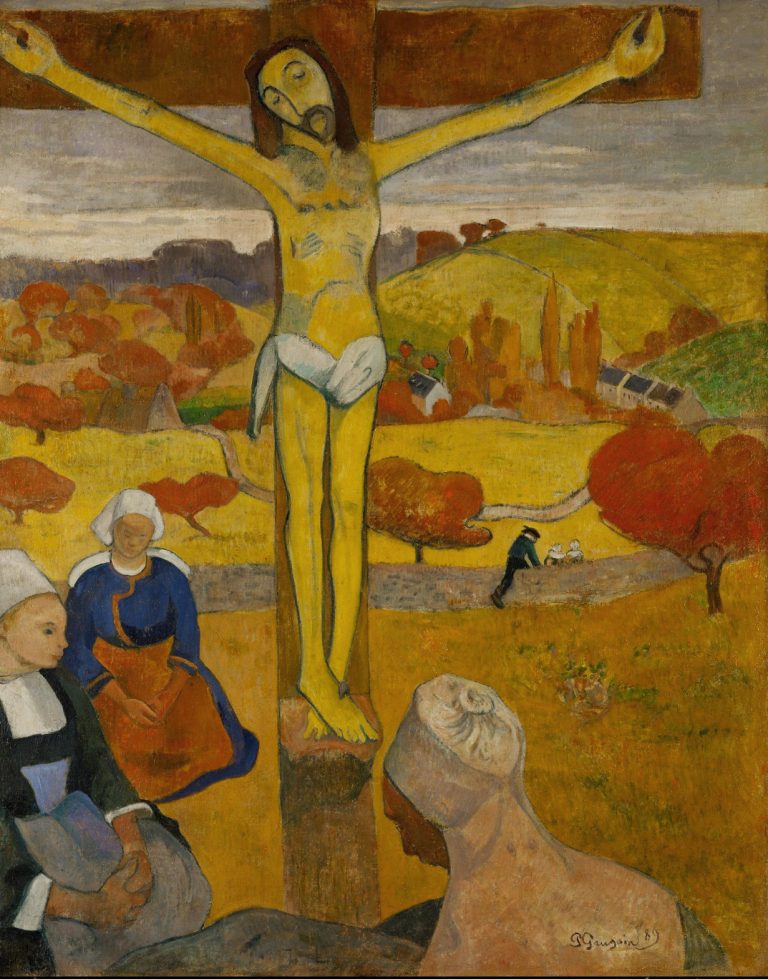
The Yellow Christ 1889:
Peasant women kneel to pray at a wayside crucifix in the Breton countryside. The humanity of the Christ figure expresses just how real the mystic experience is to the women. Yet the color is totally unreal - the yellow body of Christ and the red trees stress the otherworldliness of the scene. The child-like drawing with its strong black outlines is deliberately reminiscent of medieval stained glass.

The Market 1892:
Gauguin mixes Tahitian with Egyptian imagery in this frieze-like painting, and in fact, the composition derives from a photograph of an ancient Egyptian wall painting. A simple rhythm of turned heads and stylized gestures run across the canvas as a counterpoint to the girl's bent knees, which are turned in the same direction. The paint is applied very thinly on the course sacking canvas Gauguin was too poor To De generous with his paint.
IN THE BACKGROUND
The Lure of Tahiti
The jewel of the vast Pacific Ocean, Tahiti was famed as a paradise on earth long before Gauguin visited its shores. European sailors had savored the island's pleasures since the days of Captain Cook.
In 1890, Gauguin wrote to a friend 'I am leaving for Tahiti, where I shall hope to end my days.' His decision was influenced partly by the fact that Tahiti was as far away from Paris as it was possible to get, but also by the stream of enthusiastic reports reaching Europe from travellers who had visited the hauntingly beautiful island.
The unspoiled paradise of Gauguin's dreams, however, had vanished long before he reached the capital Papeete in 1891. There were church bells and gendarmes awaiting him as well as lovely garlanded maidens, stolid French housewives preparing old-fashioned country meals as well as carefree islanders living free off taro, yam, and breadfruit. The 'mysterious beings' he had imagined before his arrival managed to consume 45,000 gallons of island rum and 65,000 gallons of imported claret each year.
But the place itself was too lovely and the people too resilient for either to be spoiled completely. Communications were so bad that Europeanized Papeete could not make much of an impression on the rest of the island. Even today the only real road follows the coast, and in the 1890s, the interior was largely trackless. In rural districts, people lived much as they always had, by fishing or small-scale farming.
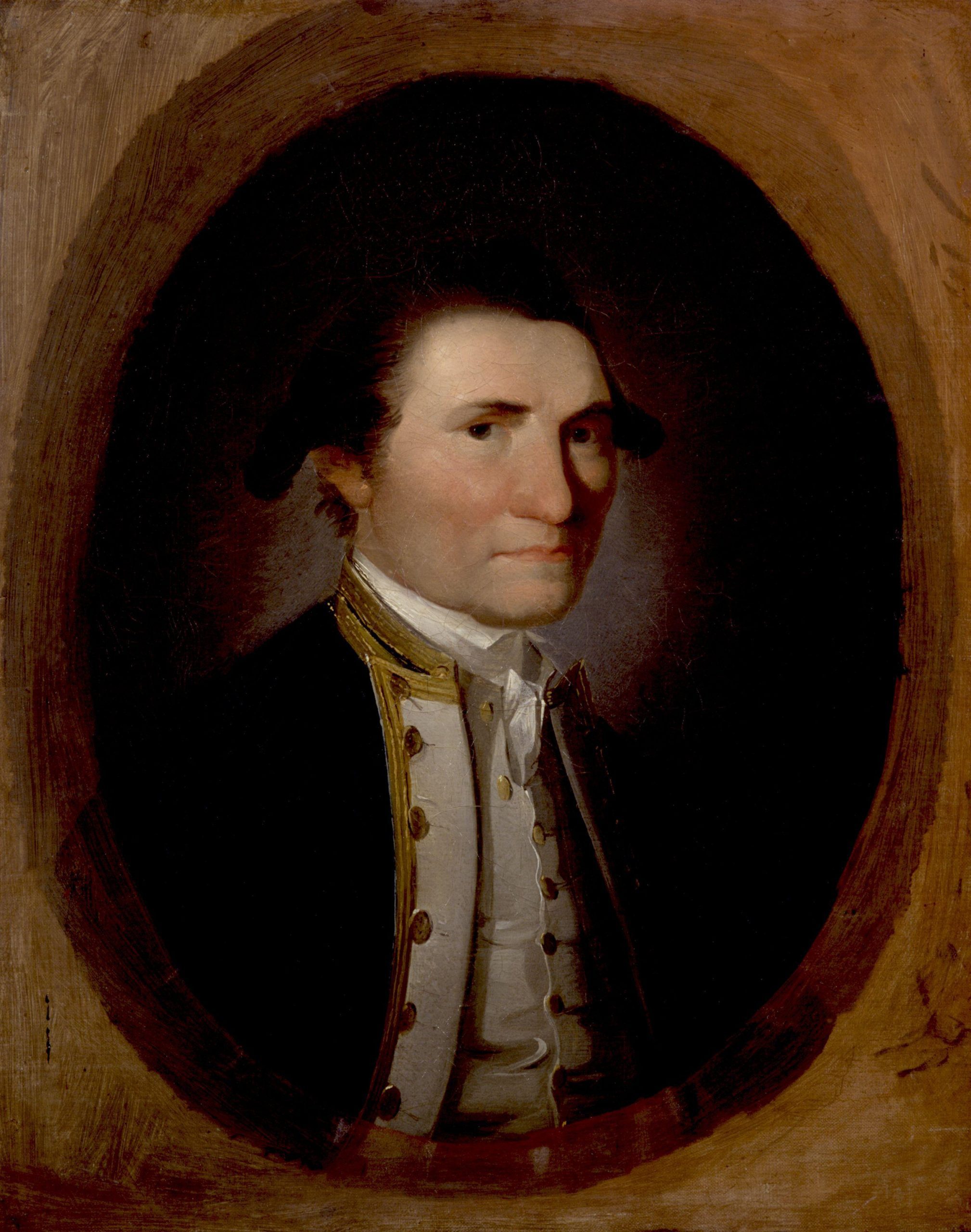
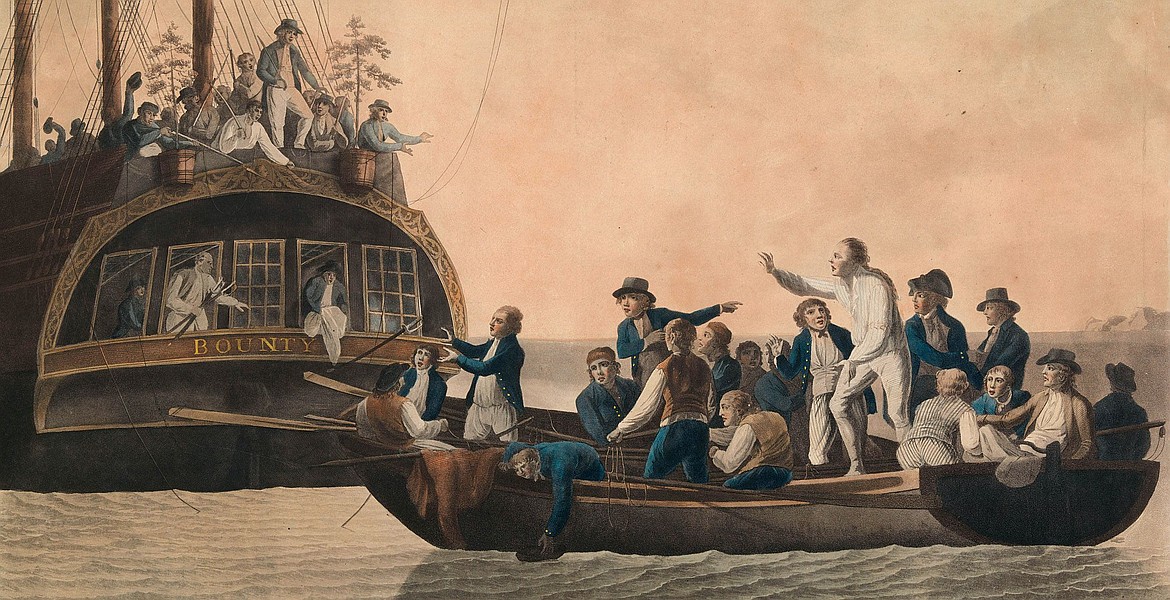
Mutiny on the Bounty:
The ignominious fate of Captain Bligh – cast adrift from his own ship in April 1789-was powerful! evidence of the lure of Tahiti. Fletcher Christian 4 and his co-mutineers returned to the island before founding their own colony, with Tahitian wives, on Pitcairn Island.
AN EXTINCT VOLCANO
Tahiti had a mesmerizing effect on Gauguin, as it had on other European visitors since its discovery by Britain's Captain Samuel Wallis in 1767. An extinct volcano lost in the immensity of the South Pacific, its lush, green slopes rise to a 7,349-foot peak, high above a shoreline ringed by coral reefs that enclose lagoons swarming with fish. But it was the island's inhabitants who made the greatest impression on the early explorers. They were handsome and easy-going people, Polynesians whose ancestors had settled around 54,000 years ago. In Tahiti, they had evolved a lifestyle that Westerners, accustomed to the drudgery of their own societies, saw as a kind of paradise.
The climate, though a little damp, was balmy X and reasonably cool by tropical standards. Fish and shellfish, breadfruit and bananas seemed to be had for the asking, without labour. There was little need for clothing. And as Wallis and his crew discovered - to the captain's horror and the men's delight - the languid young women of the island were only too willing to exchange their favours for some trifling gift. Iron nails were the favoured currency: by the time Wallis sailed for home after a month's sojourn, the fixed bayonets of his Royal Marines were barely enough to stop his men prising out every iron fastening in the ship.
While Wallis, a tough but unimaginative officer, was preparing his report for the Admiralty, an explorer with a more philosophical turn of mind was making his landfall on Tahiti. Louis Antoine de Bougainville was not only a soldier and a navigator. He was also steeped in the new ideas sweeping 18th-century Europe. And in Tahiti he found a reality to match philosopher Jean-Jacques Rousseau's ideal of the noble savage - of man at peace with nature.
Bougainville and his crew were welcomed as Wallis had been. 'They pressed us to choose a woman and to come on shore with her,' he wrote, and their gestures, which were unmistakably clear, denoted in what manner we should form an acquaintance with her.' His naturalist, Philibert Commerson, enthused about'natural man, who is born essentially good, free of every prejudice, and who follows, without defiance and without remorse, the gentle impulses of instinct not yet corrupted by reason.'
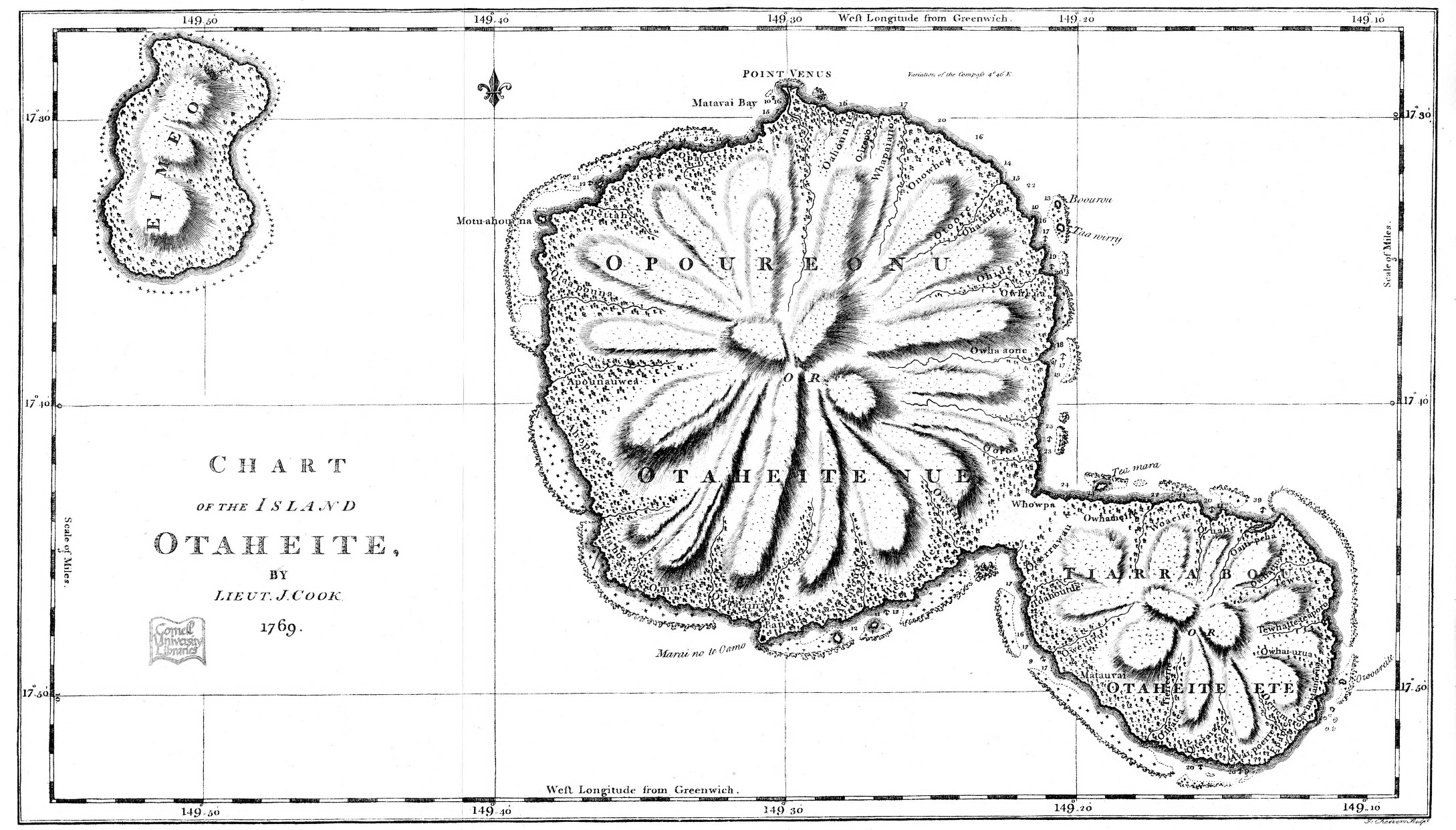
Captain Cook charts Tahiti:
James Cook - one of England's greatest explorers - visited Tahiti in 1769 on board the Endeavour, and produced this early chart of the island.

Matavai Bay:
With its wonderful natural harbour at natural harbour at Matavai Bay, the island of Tahiti became the centre for early voyages to Polynesia. This picture, painted in 1773 by William Hodges, Captain Cook's artist on his second voyage, shows Cook's ships, HMS Resolution and HMS Adventure in the bay.
WARRIOR SOCIETY
Cominerson's was a notion that endured until Gauguin's time and after. But although it contained a germ of truth, it was largely an illusion born out of wishful thinking. For life on Tahiti was no idyll. The islanders did not use the leisure time granted by their comfortable environment to live the kind of rapturous, untrammelled existence dreamed of by European philosophers. Instead, with or without assistance from the gentle impulses of instincť, they had created a fierce warrior society that indulged in slavery and human sacrifice.
Nor did the blithe promiscuity of many young Tahitian women mean that they were devotees of free love. In fact, the Tahitians had a complex set of rules for sexual behaviour inside and outside marriage, which even today anthropologists have not fully elucidated. A European who made an enthusiastic grab for the wrong woman could - and often did - pay for it with his life.
Nevertheless, the island never lost its seductive fascination. Captain James Cook, who visited it in 1769, was reduced to holding Tahitian chiefs hostage to obtain the return of deserters from his ship - and Cook was a well-loved leader. In 1789, the contrast between Tahitian life and Royal Naval discipline was enough to provoke the celebrated mutiny on HMS Bounty. Regardless of its flaws, paradise Tahiti-style was better than life on the ship.
But the coming of the Europeans was itself enough to put an end to the old way of life. The newcomers brought syphilis, a poor return for the island women's affections. They brought measles and smallpox and a host of other diseases to which the Polynesians had little or no resistance. They brought rum. And unscrupulous and well-armed Europeans took sides for their own advantage in the island's internal quarrels, which were bloody enough already without their help.
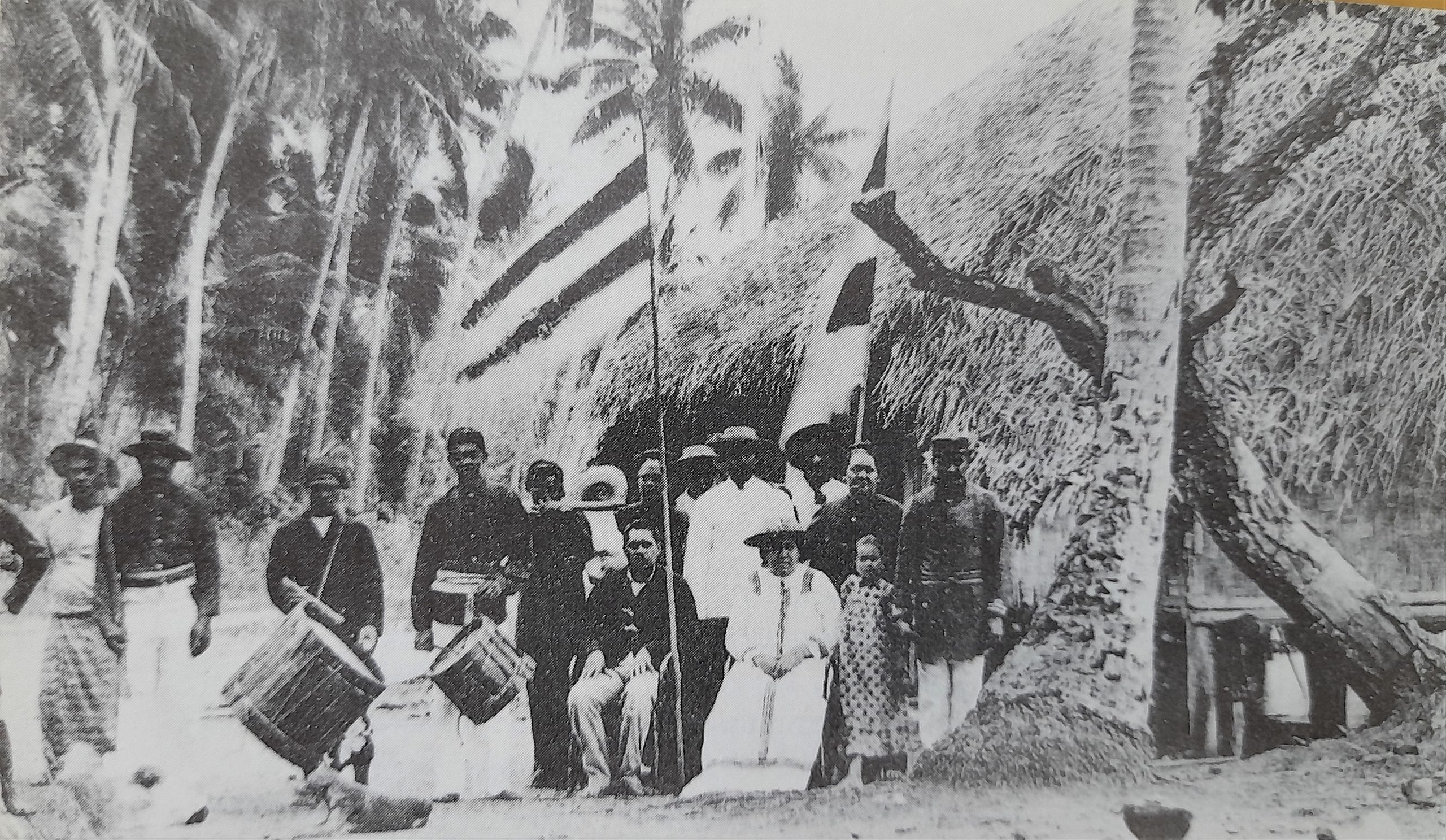
The Royal Family:
An early photograph shows the Royal Family in Western-style clothing outside their residence on the island of Ra'iatea. Before the advent of Christianity, the nearby island had been Tahiti's center of worship.

Princess Poedua:
Poedua was a Ra'iatean princess, painted in 1777 by Cook's artist on HMS Resolution John Webber. She epitomizes the beauty of Tahitian women: delicate tattoos decorate her arms, and in her right hand she holds a fly whisk.
DESTRUCTION OF A PEOPLE
The results were quite devastating. According to some estimates, Tahiti's 402 square miles supported as many as 150,000 people before the Europeans came. By the end of the century, the population had crashed to 15,000; by 1830 it had fallen to 8,000.
Missionaries did their own kind of damage. Their first settlement was established in 1797, and although they did their best to protect their flocks from the ravages of drink and disease, they eventually succeeded in undermining the local traditions that any society needs in order to keep its self-respect. The islanders were told of the evils of nakedness and fornication and introduced to the doctrinal distinctions between Calvinists and Catholics and all the other Christian sects.
Outright colonization followed. The Anglo-French rivalry ended with a half-hearted French Protectorate established in 1843; the last Tahitian king with any pretense of independence abdicated in 1880 and in that year the island became a full French colony.
Tahiti's fate could have been much worse. By 19th-century standards, the colonial administration was efficient and humane. Outside the capital of Papeete, French was seldom spoken, and disputes were more likely to be settled by ancient tribal law than official regulations. Christianity had successfully driven out the old pagan worship, and even the names of ancient gods had been forgotten; but although Tahitians had become regular church-goers, traditional festivals of song and dance had survived.
A cold observer would see that imported, factory-woven cloth had replaced native products, that there was much hymn-singing, and that bit by bit the population was beginning to drift towards the modestly bright lights of Papeete. But a painter would see what his mind wanted to see. Paradise, like beauty, was in the eye of the beholder.
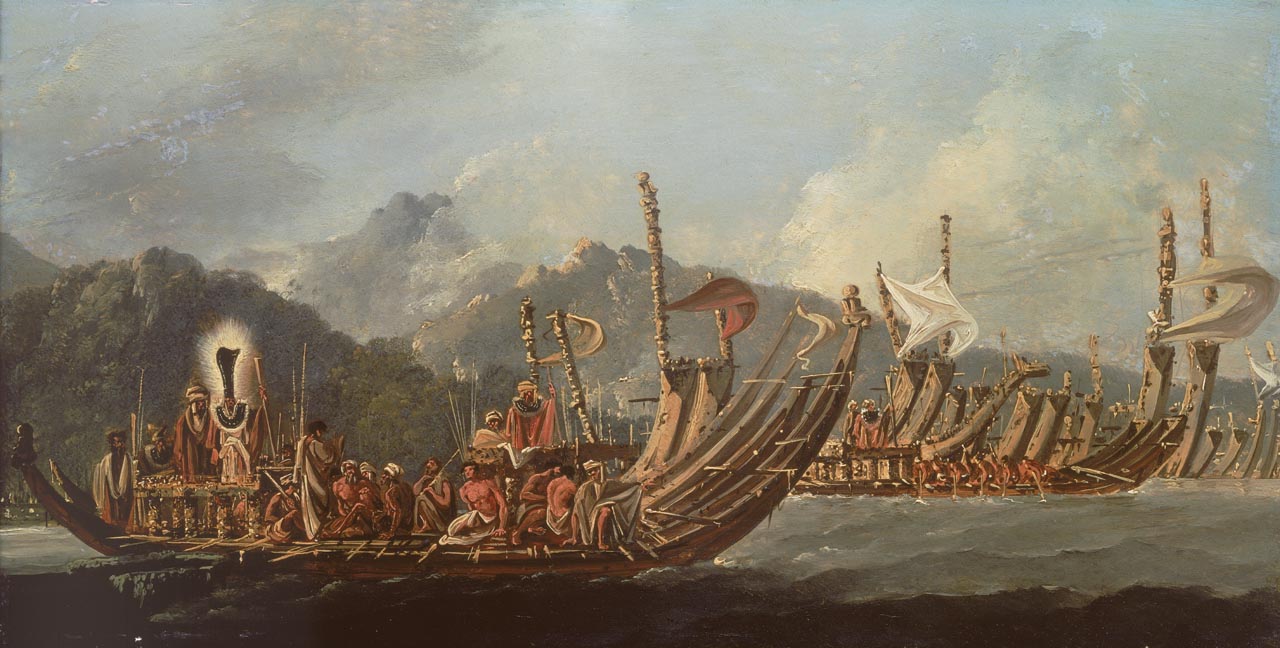
War galleys:
Despite their friendliness to Europeans, the Tahitians were formidable in battle. Their war galley - called a pahi – was deep-keeled with a fighting platform. Battle chiefs wore flamboyant dresses and high headdresses to impress and terrify the enemy.
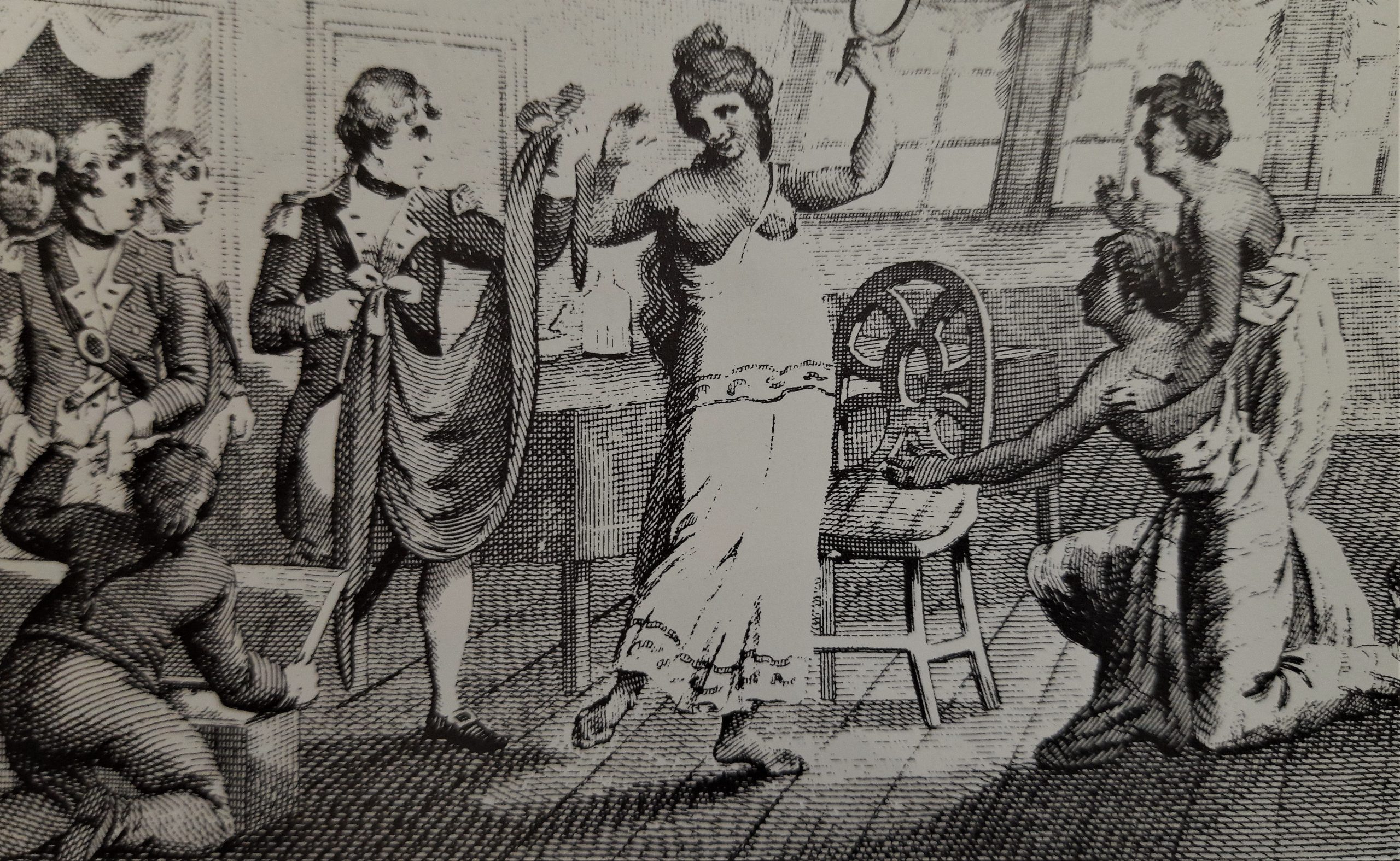
Bearing gifts:
British seamen arriving at Tahiti soon learned that the beautiful island women were usually only too pleased to exchange their favors for gifts. But approaching the wrong woman could be very dangerous, and even result in death.
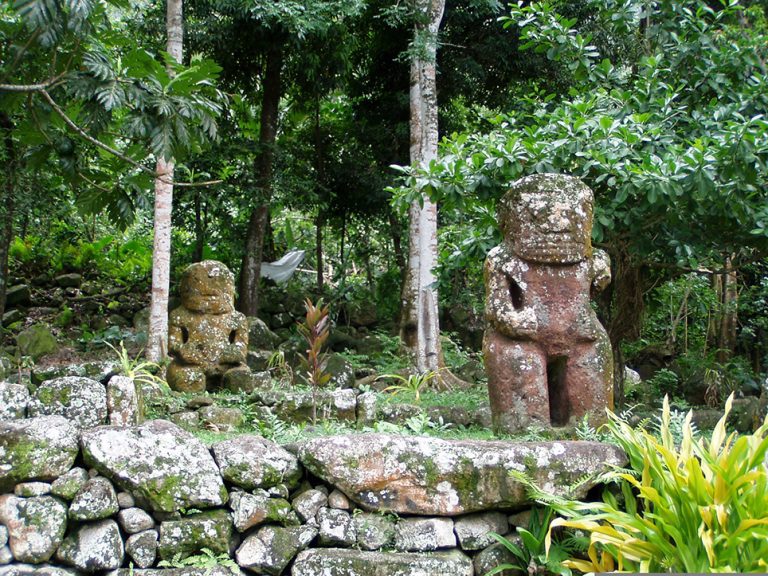
Powerful idols :
Tahitian religion centered on the worship of gods and ancestral spirits and could involve human sacrifice. Sorcerers used wooden images, known as ti'i, when mobilizing the spirits to harm their enemies.
William Blake ‘The Painter Poet’
-
Posted by
Umaid
- 0 comments
Warli Painting
-
Posted by
Umaid
- 0 comments
Titian ‘The Italian Renaissance’
-
Posted by
Umaid
- 0 comments
Thangka Painting Style
-
Posted by
Umaid
- 0 comments
Pre- Mughal Traditions of Painting in Marwar
-
Posted by
Umaid
- 0 comments
Pieter Bruegel the Elder ‘The Draughtsman and engraver ‘
-
Posted by
Umaid
- 0 comments
Pichwai Paintings of Rajasthan
-
Posted by
Umaid
- 0 comments
Phad Paintings of Rajasthan
-
Posted by
Umaid
- 0 comments
Paul Gauguin ‘Mysteries of Paradise’
-
Posted by
Umaid
- 0 comments

